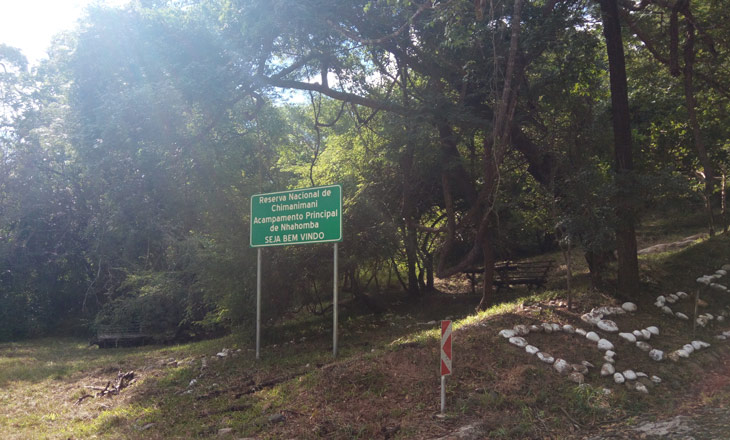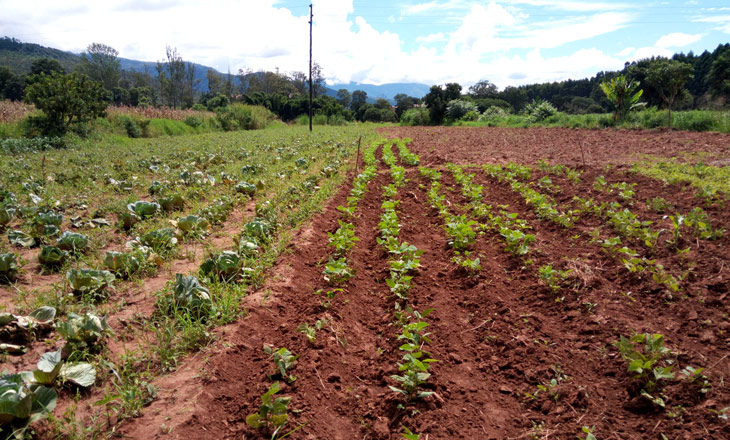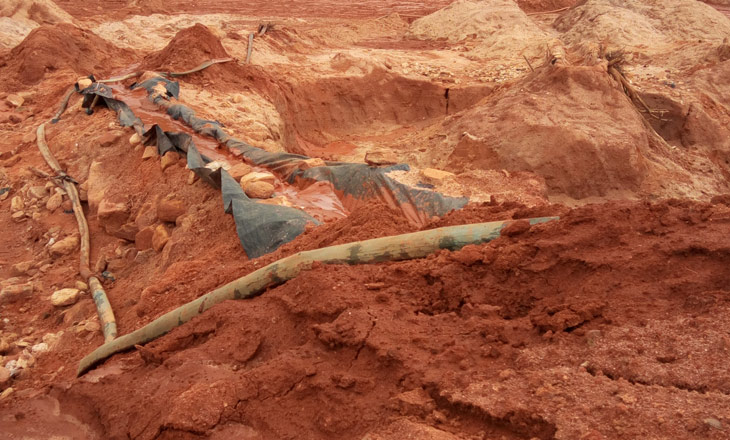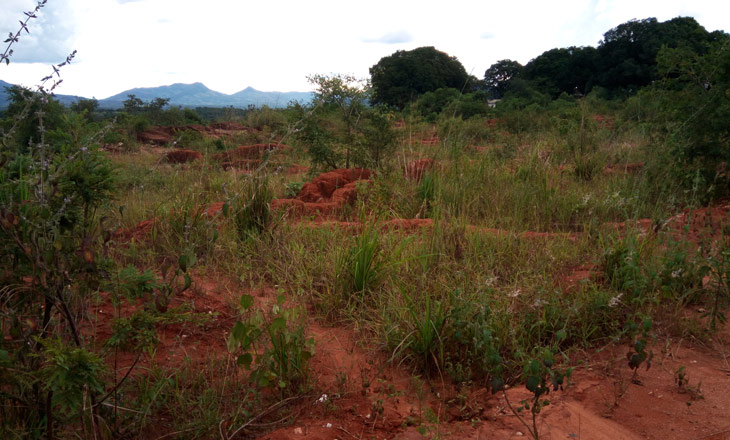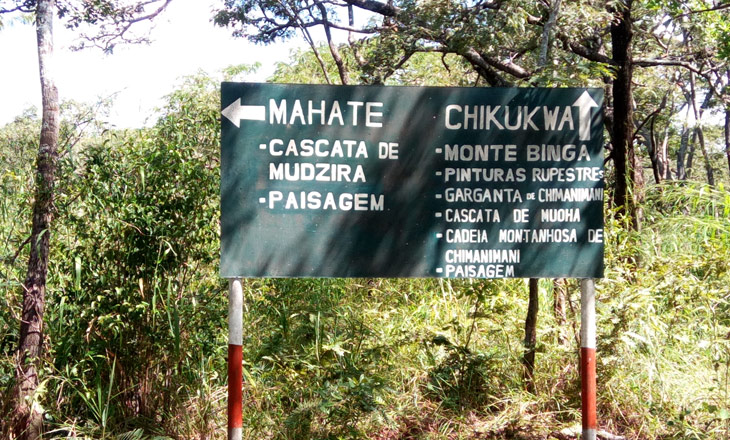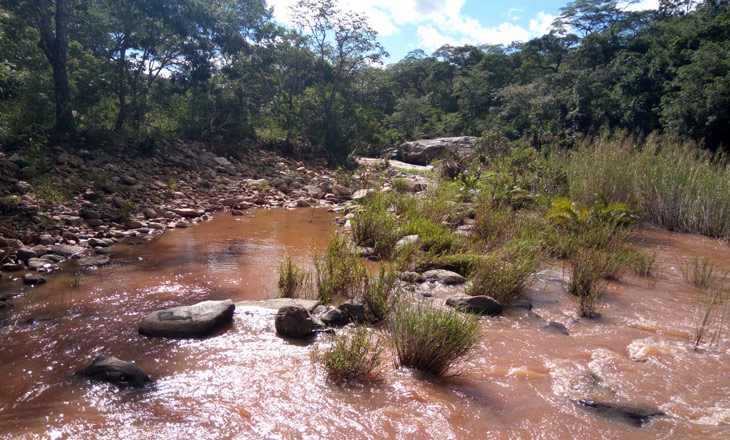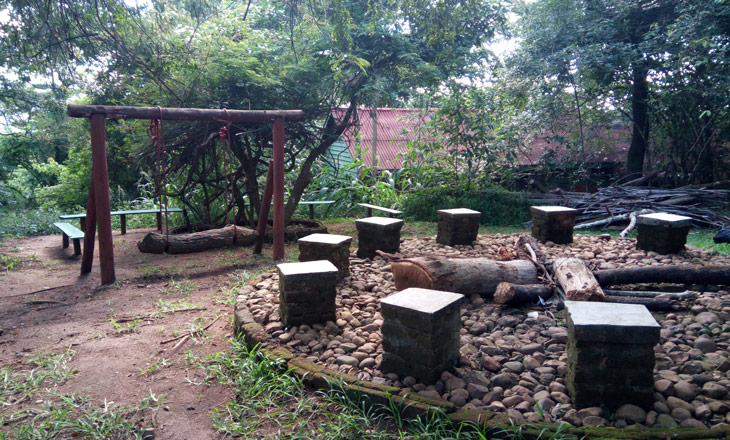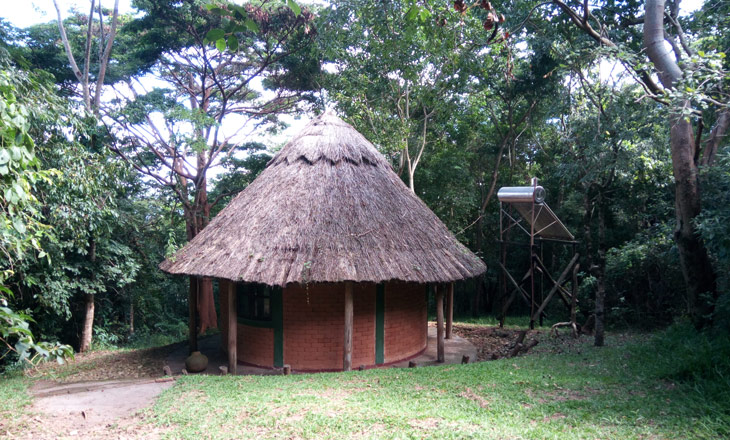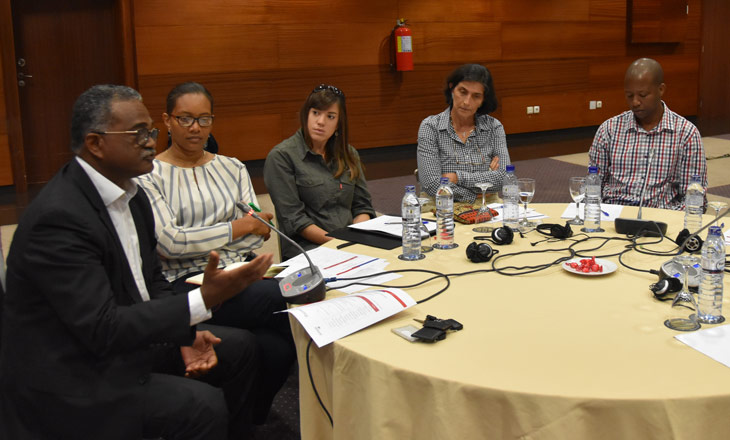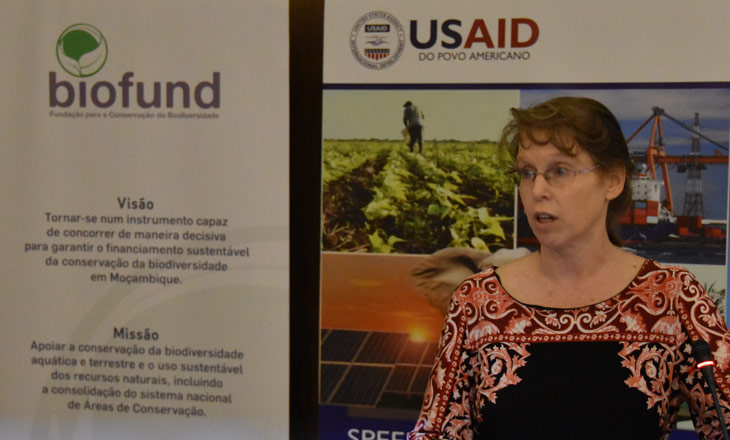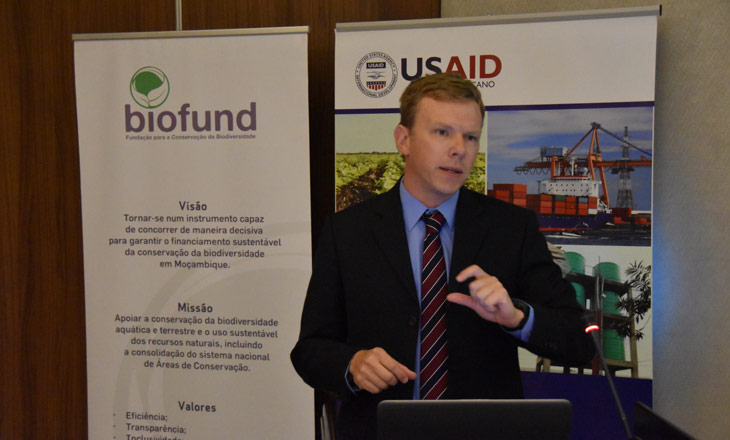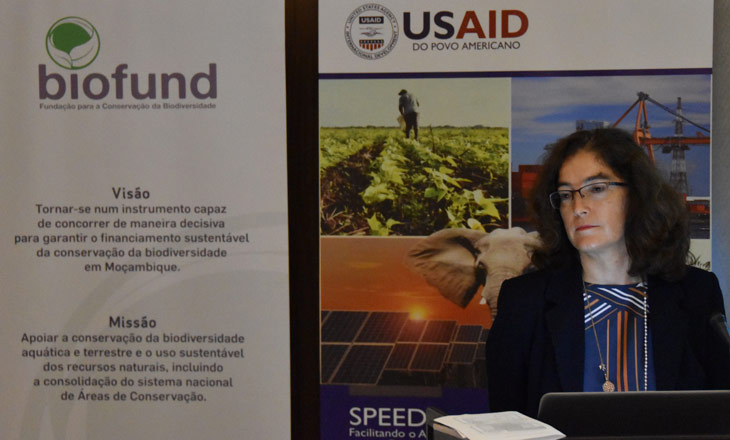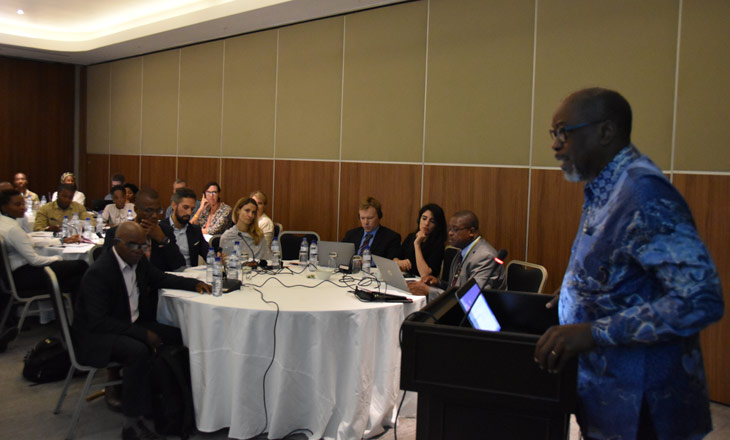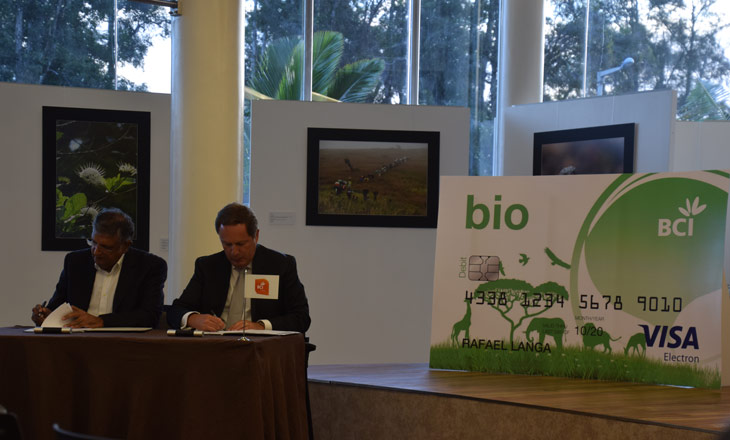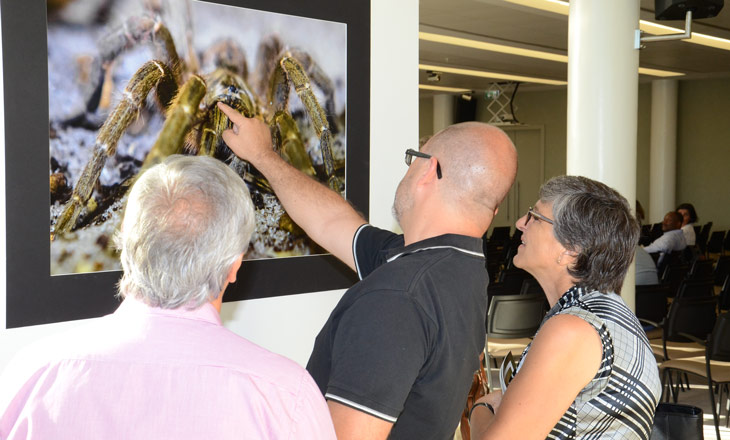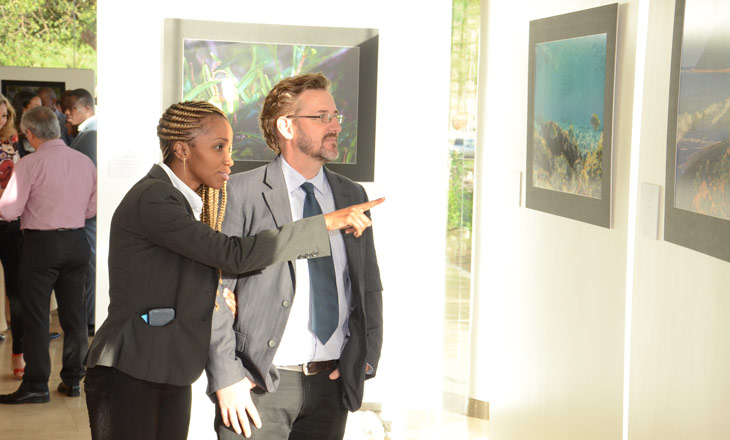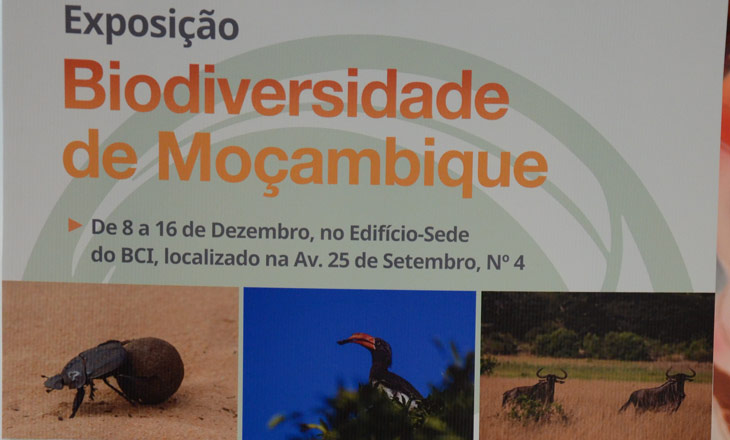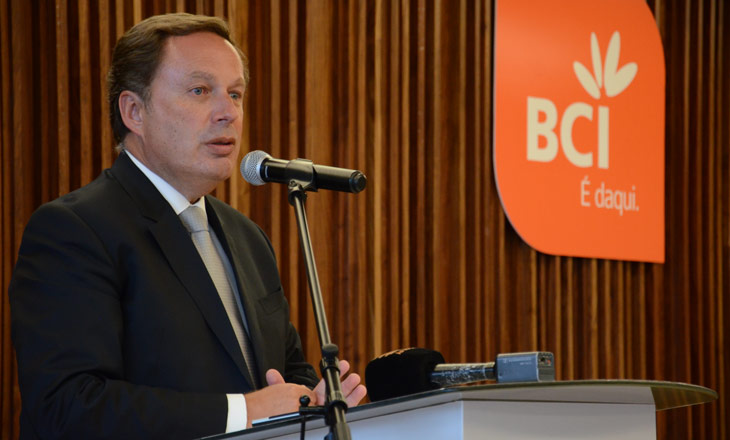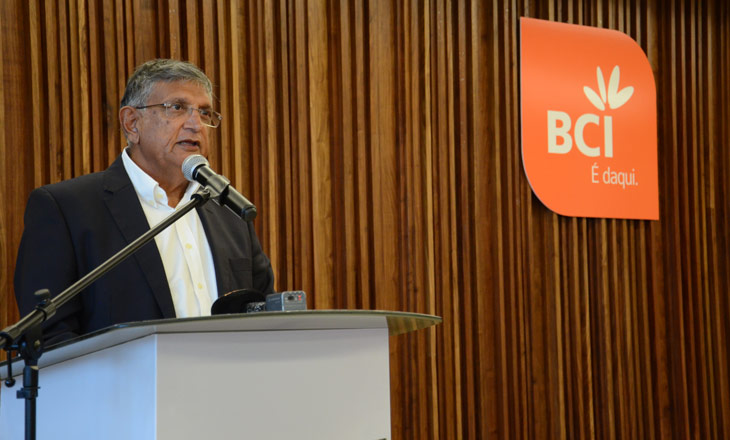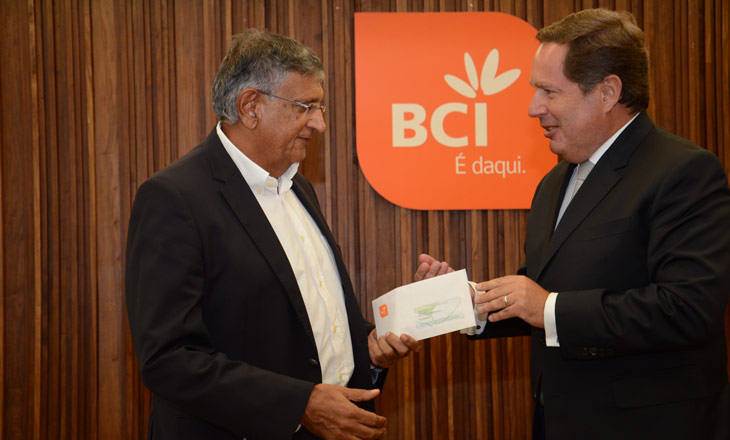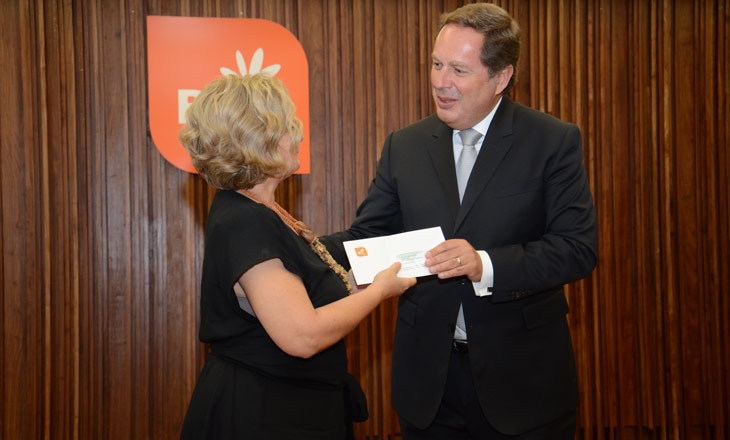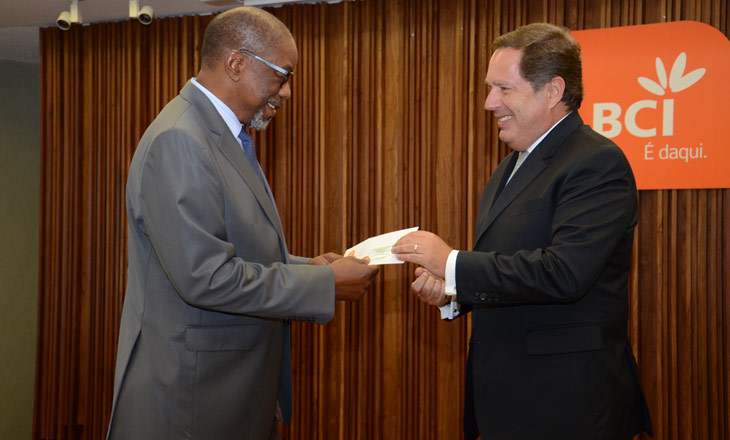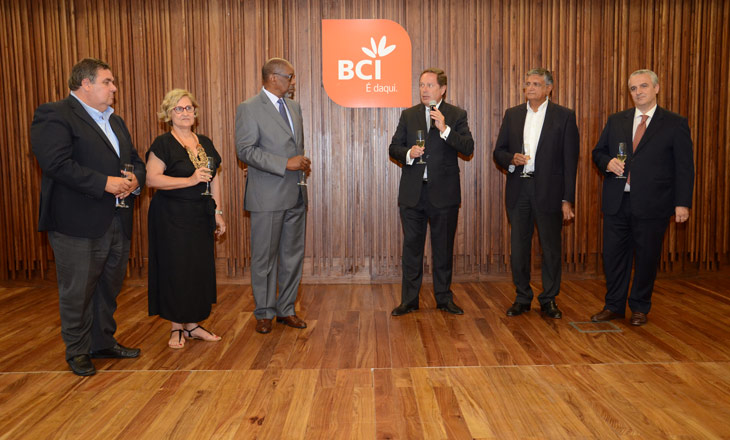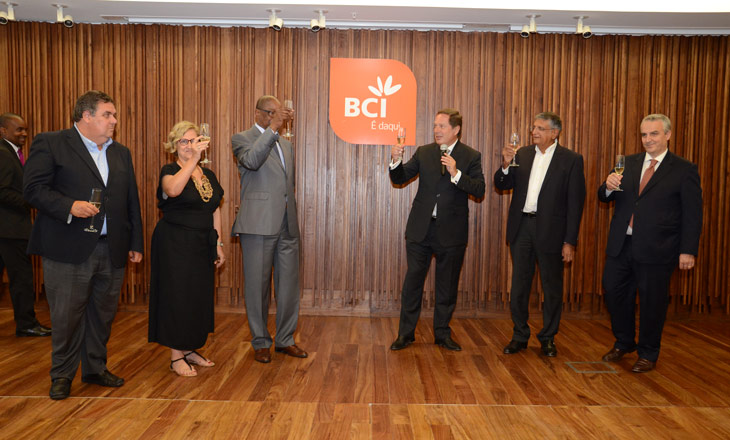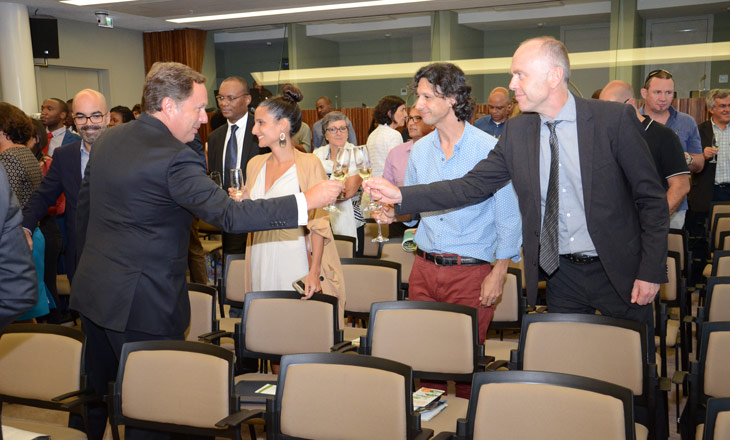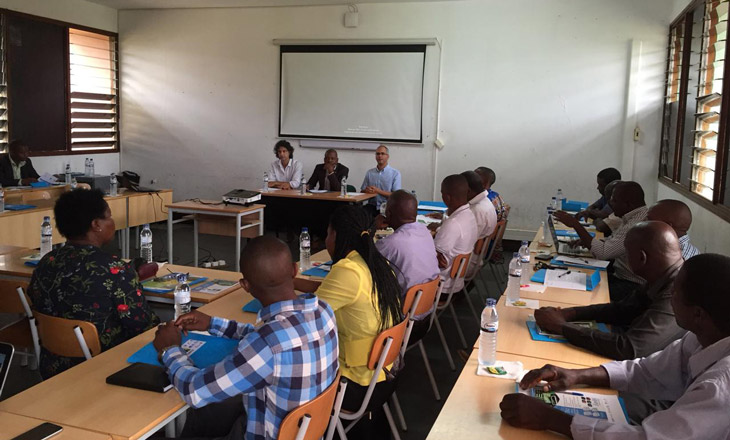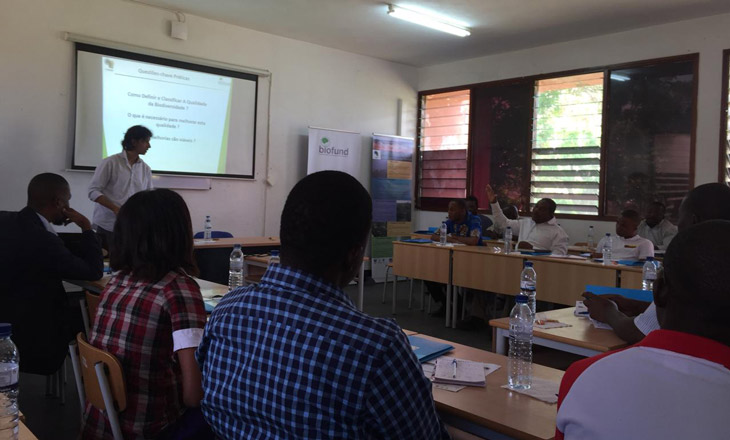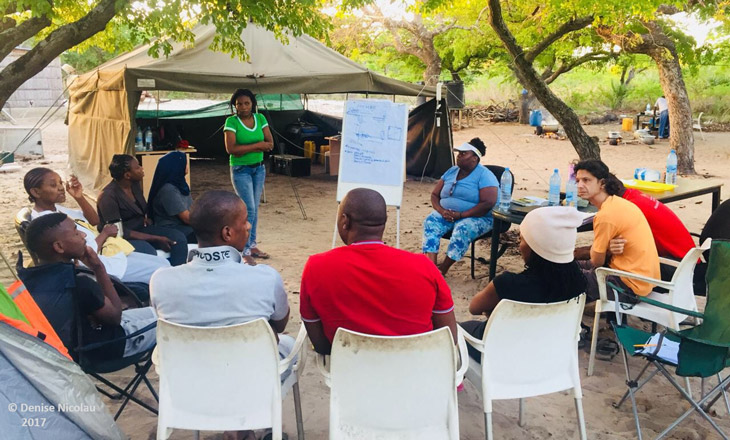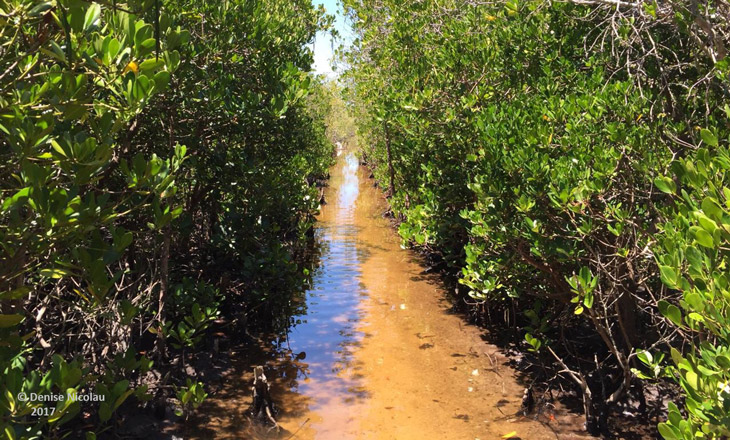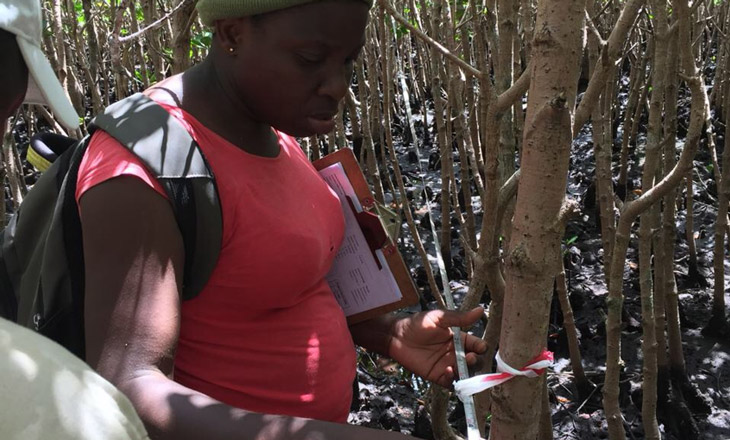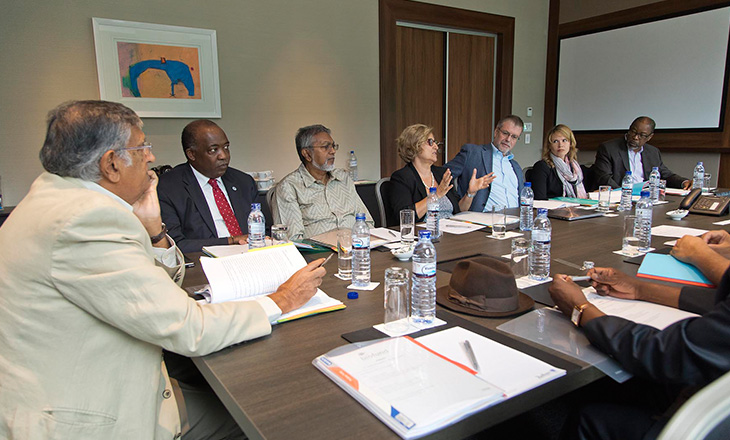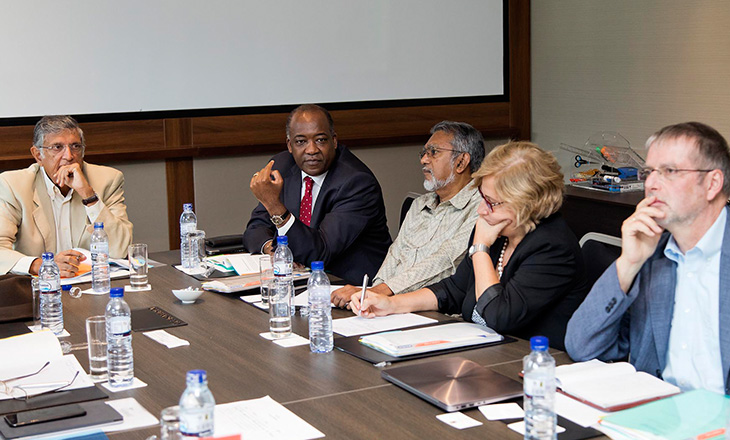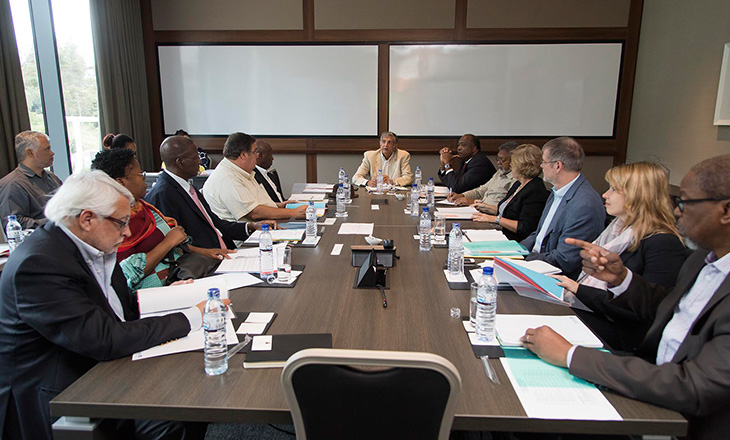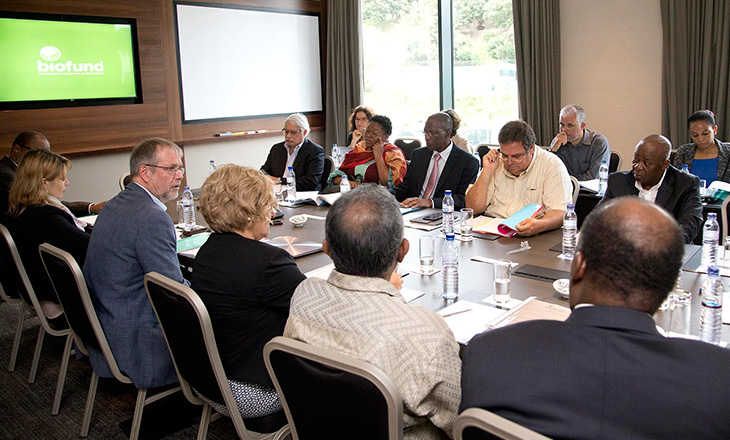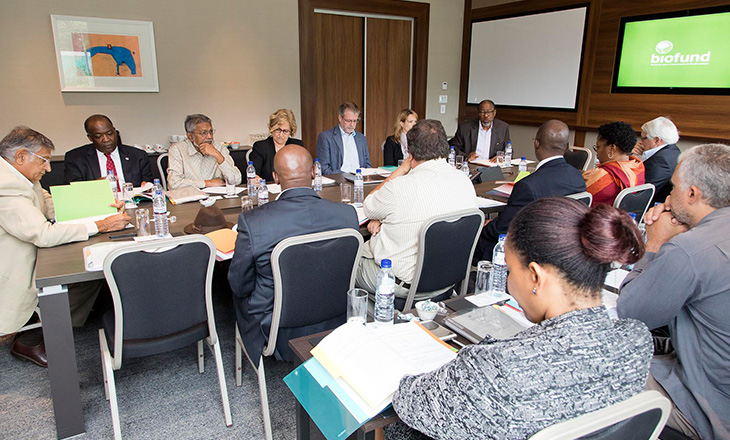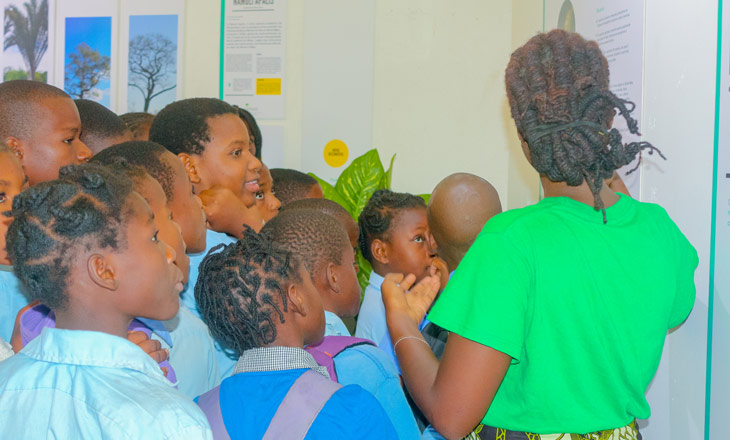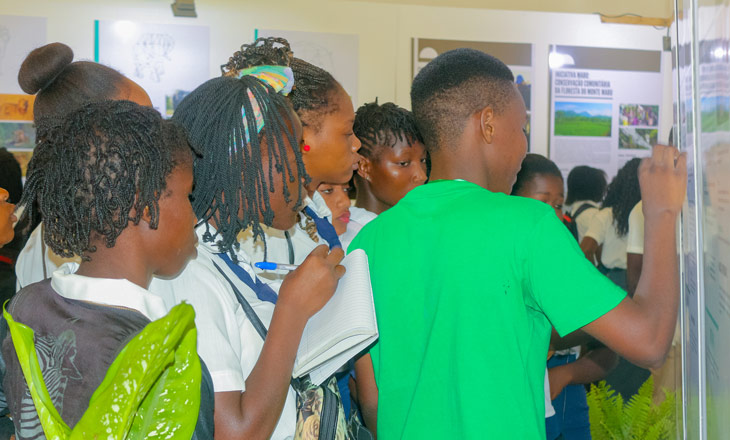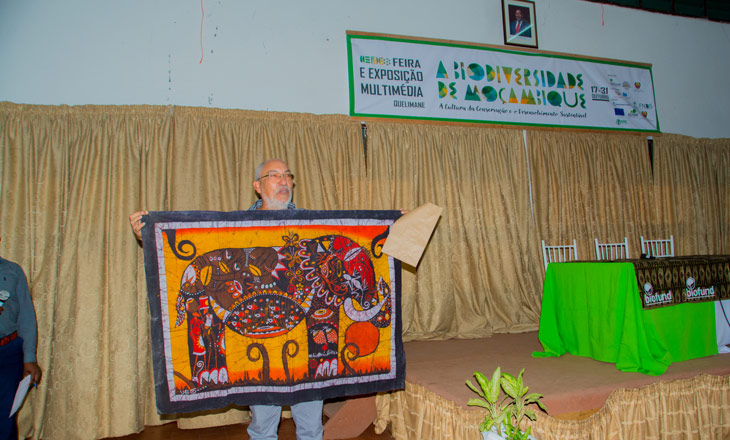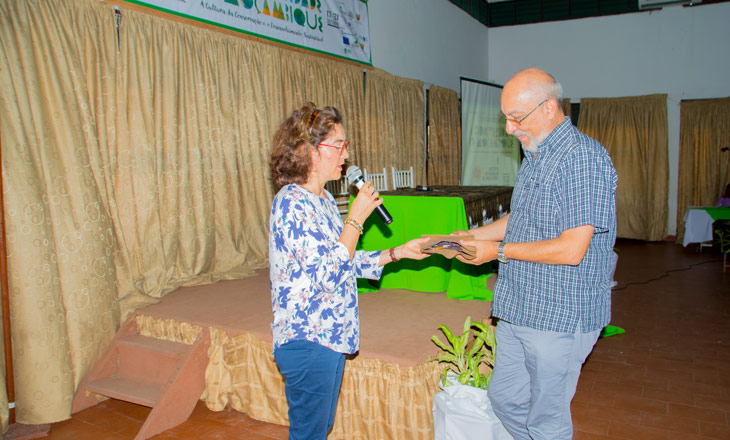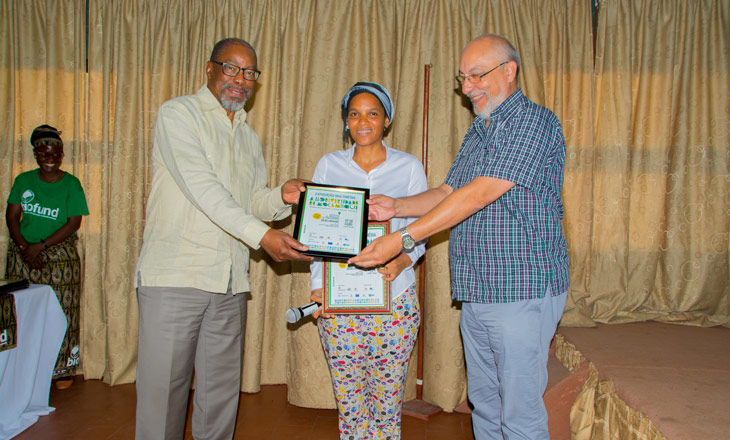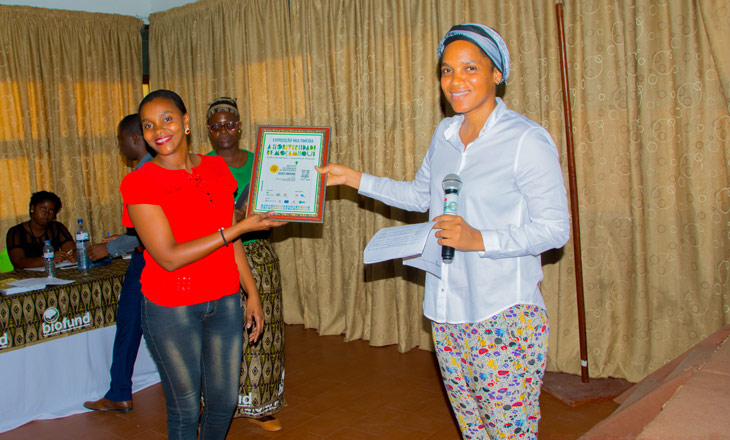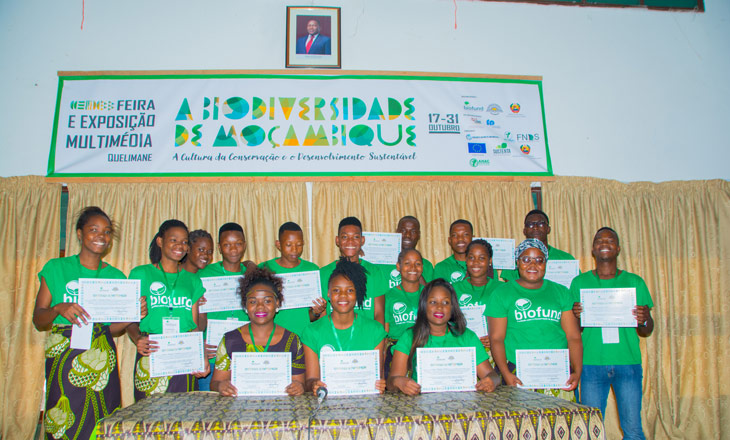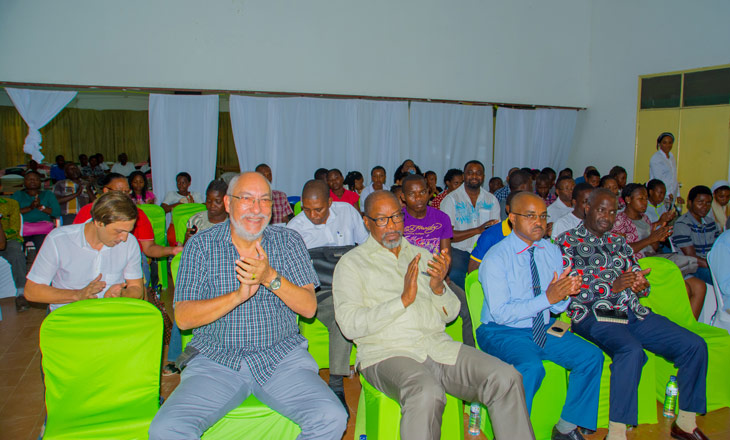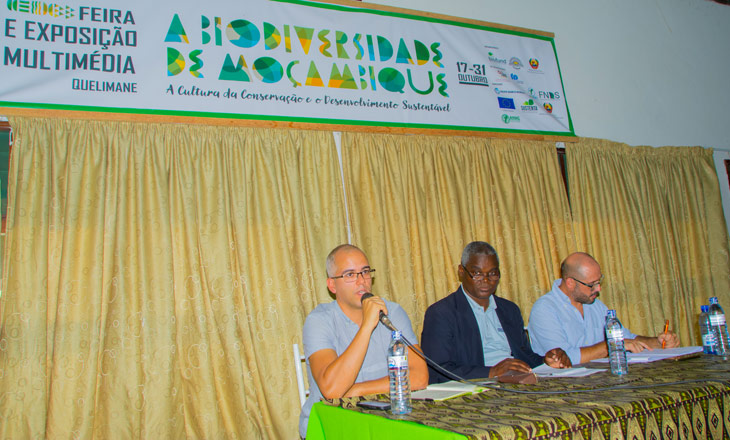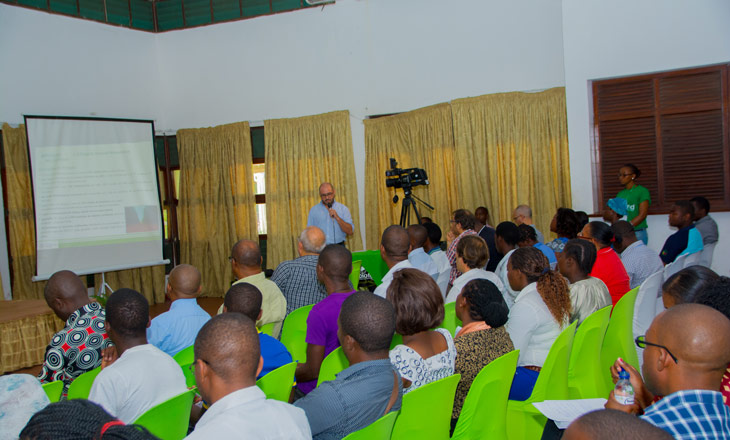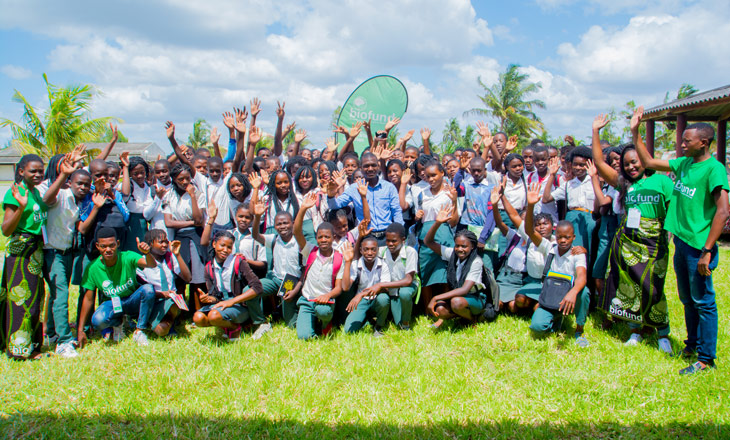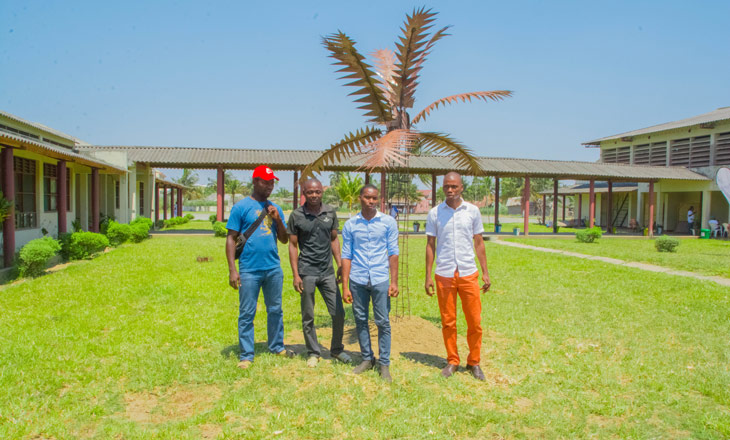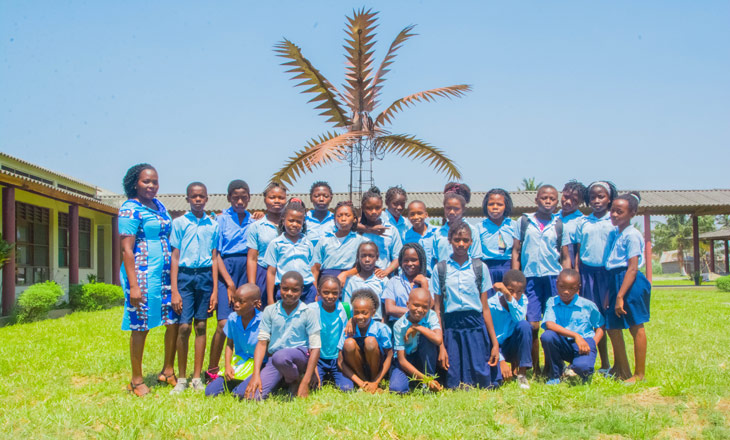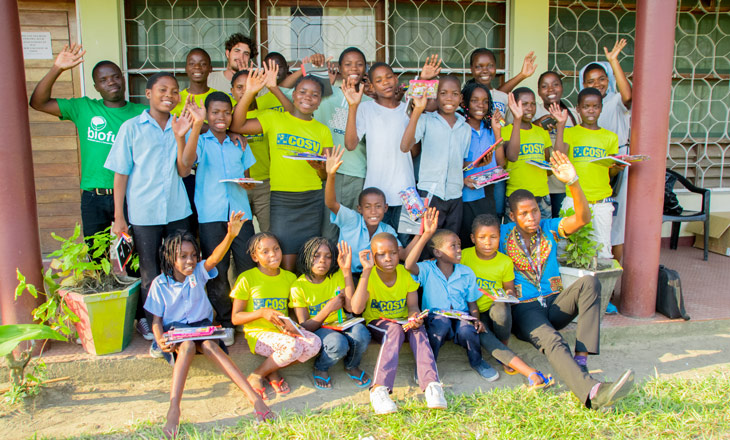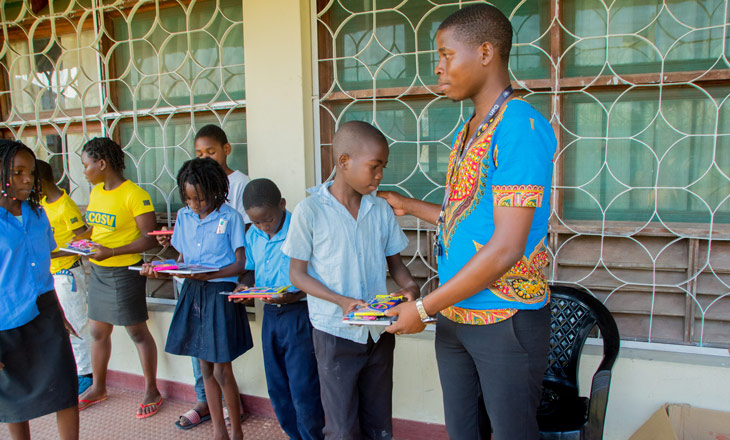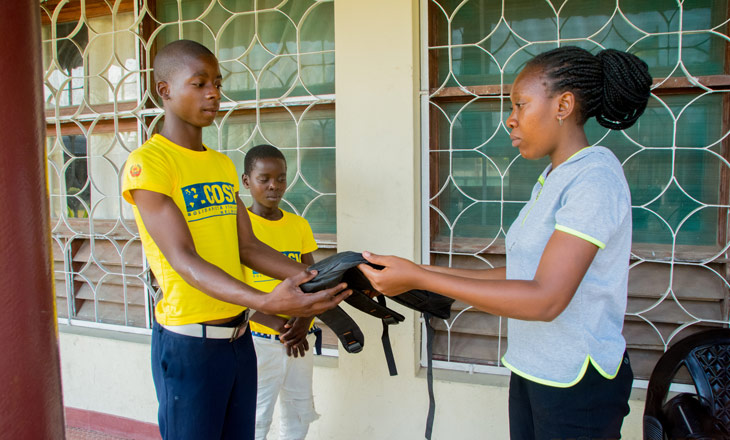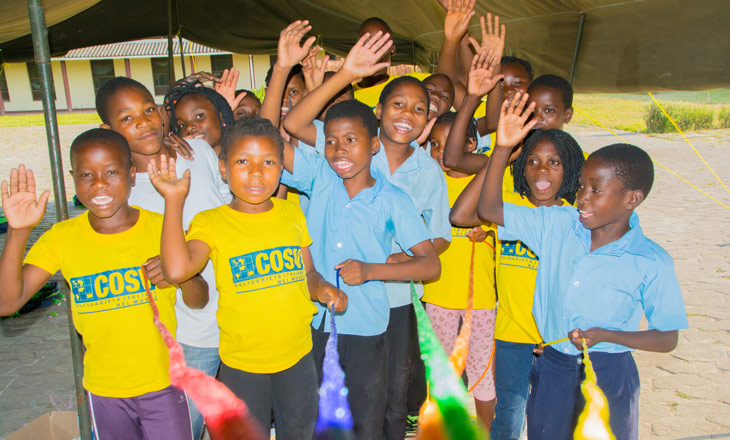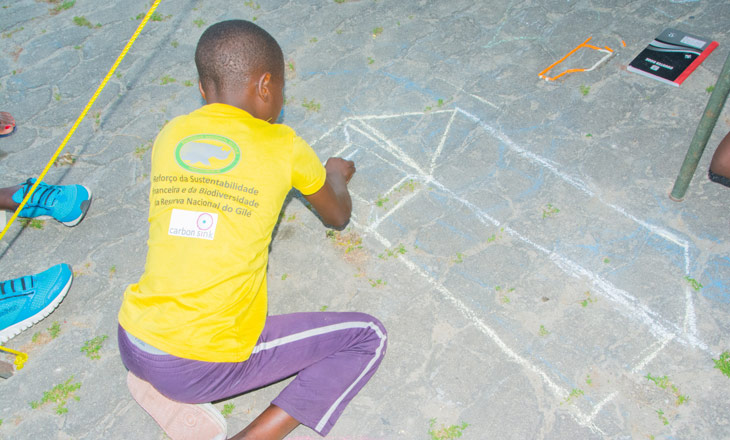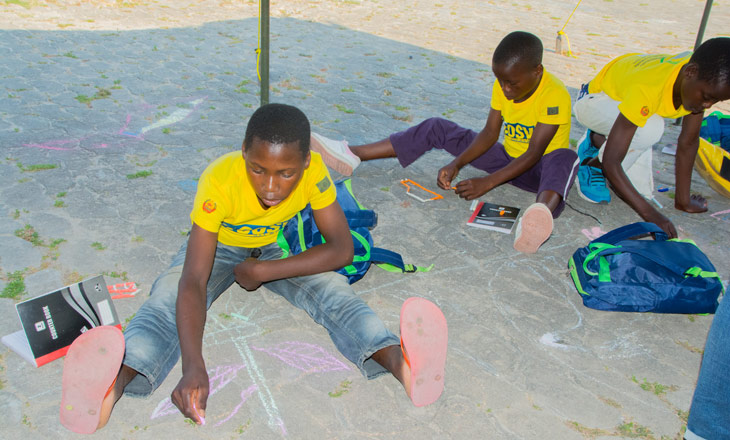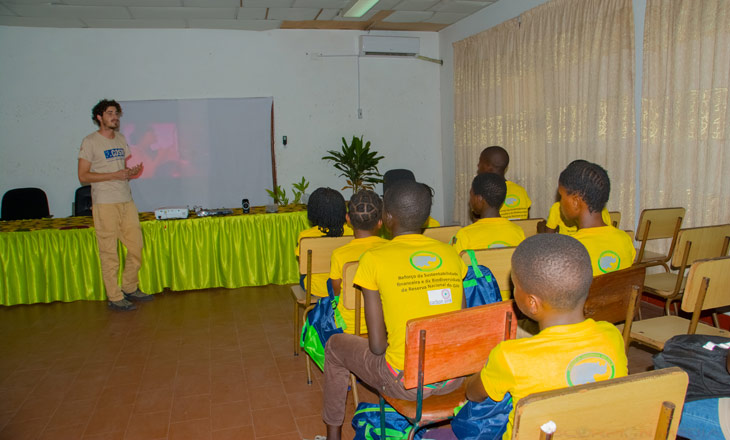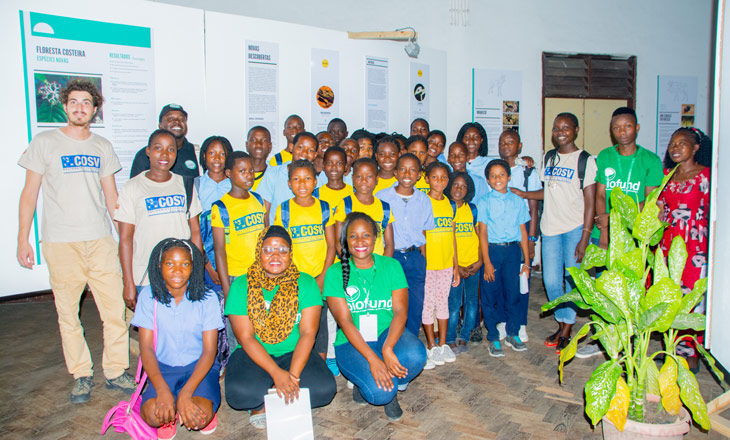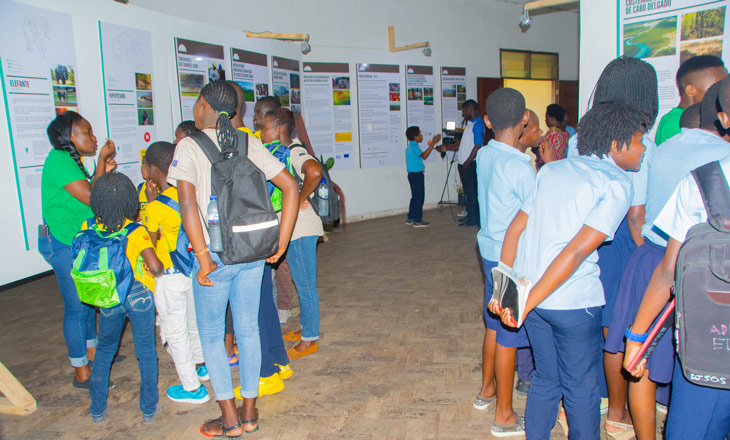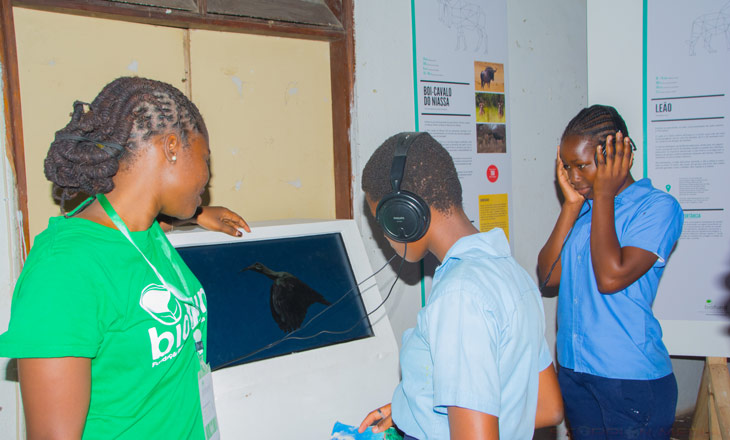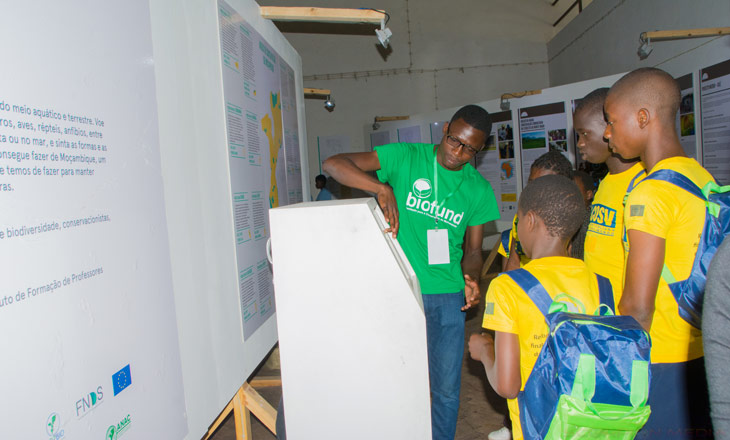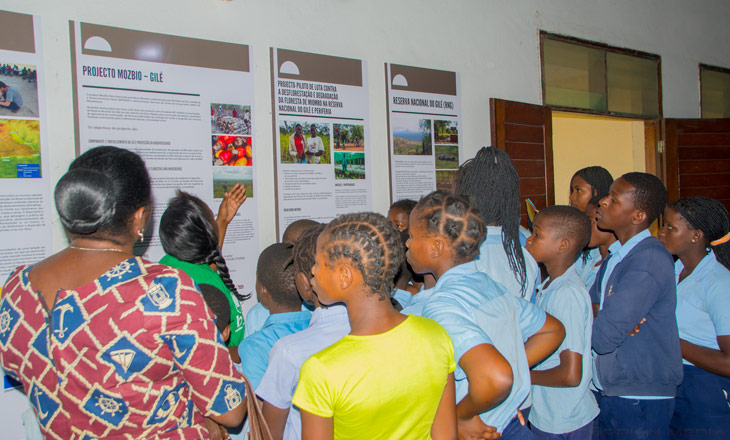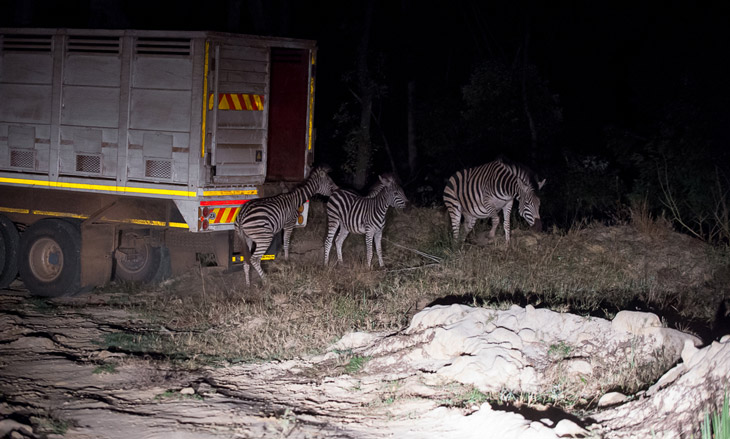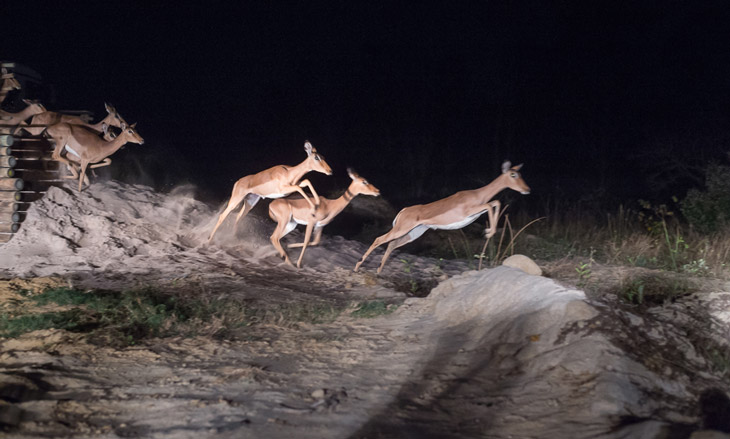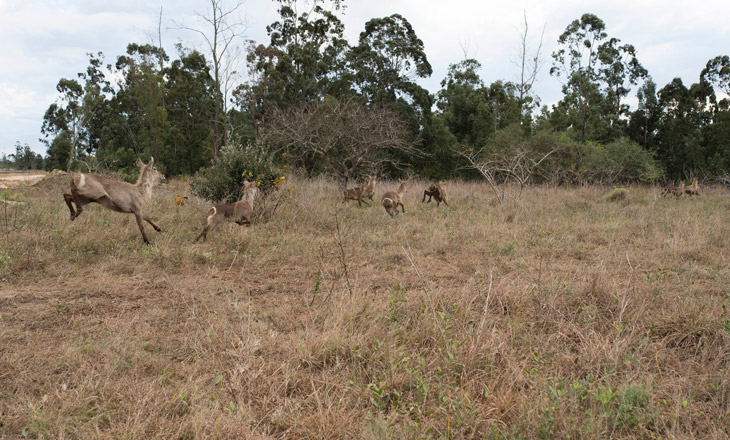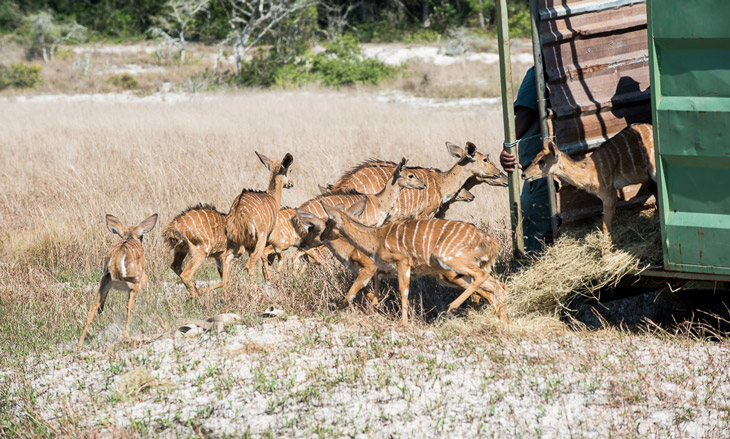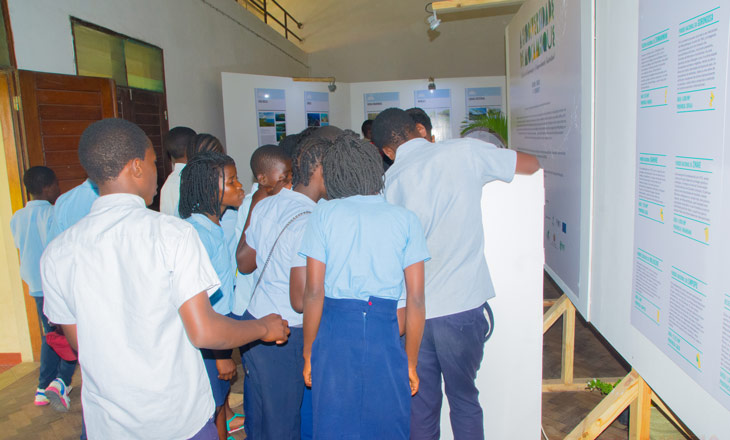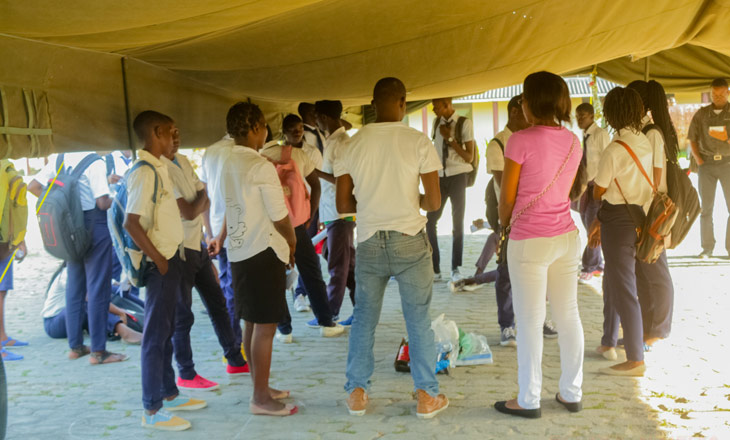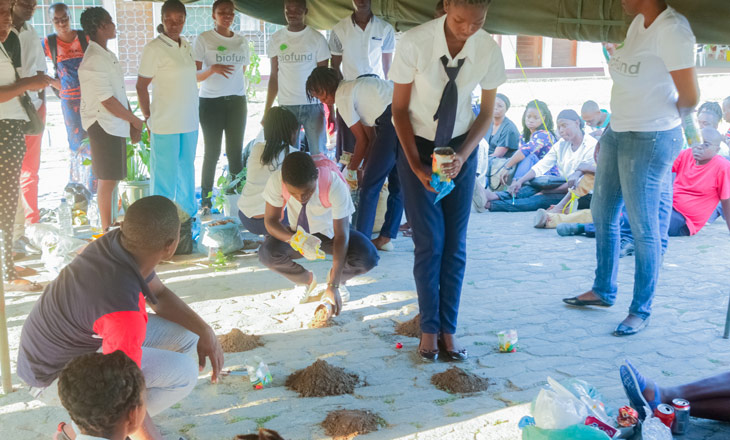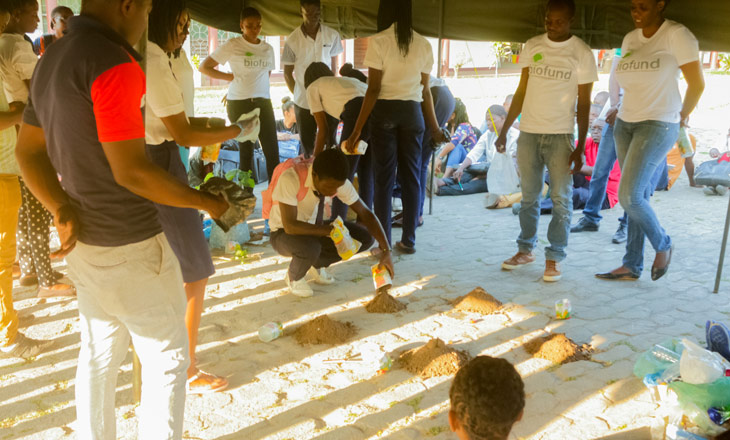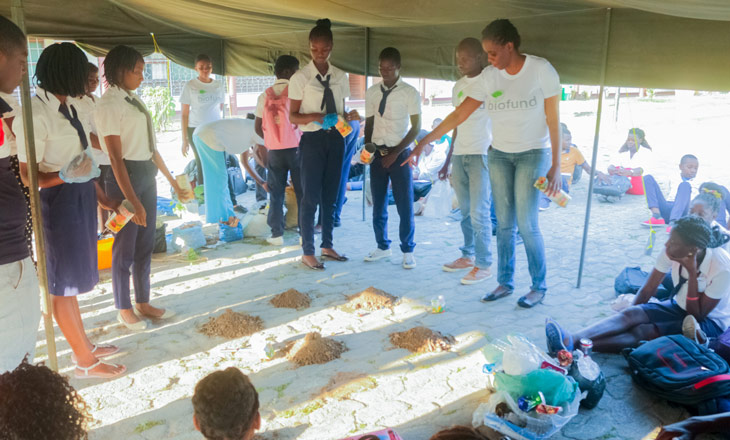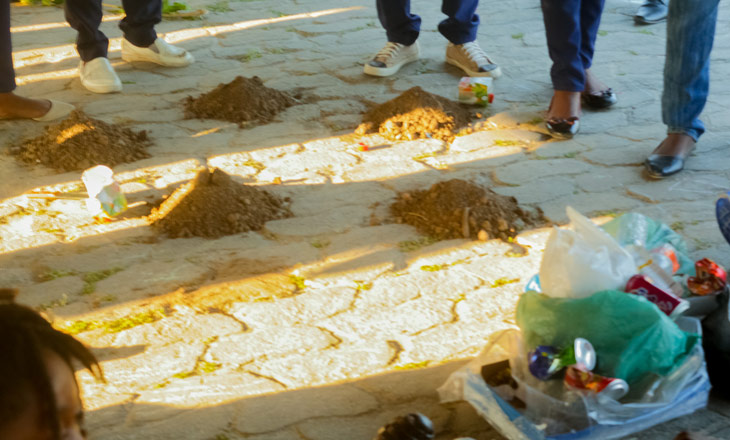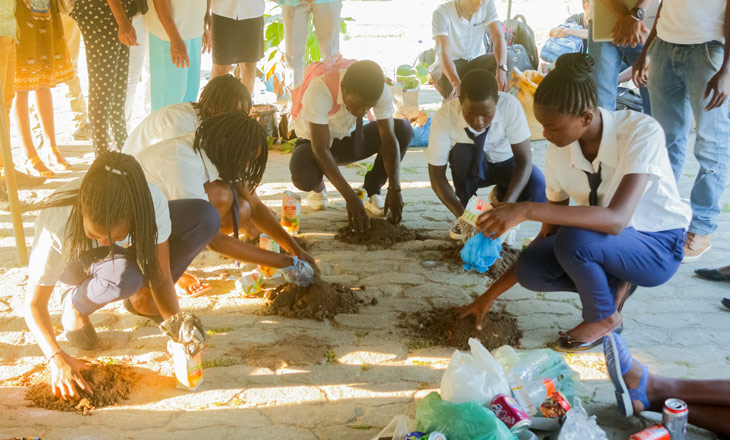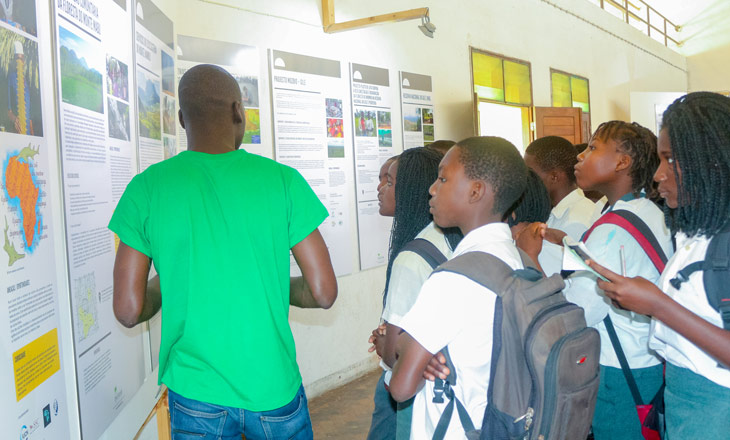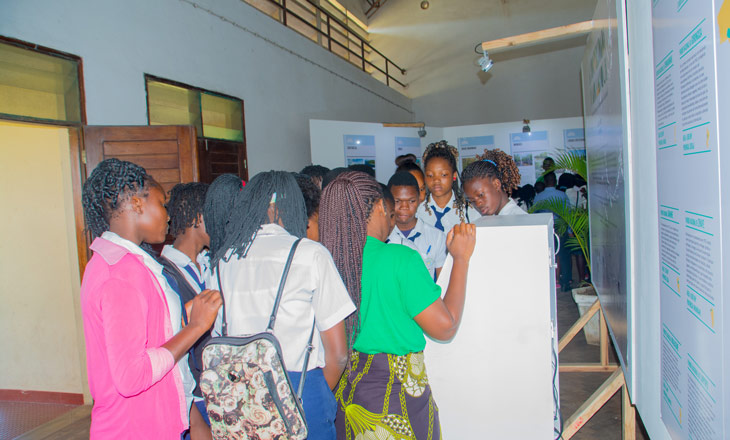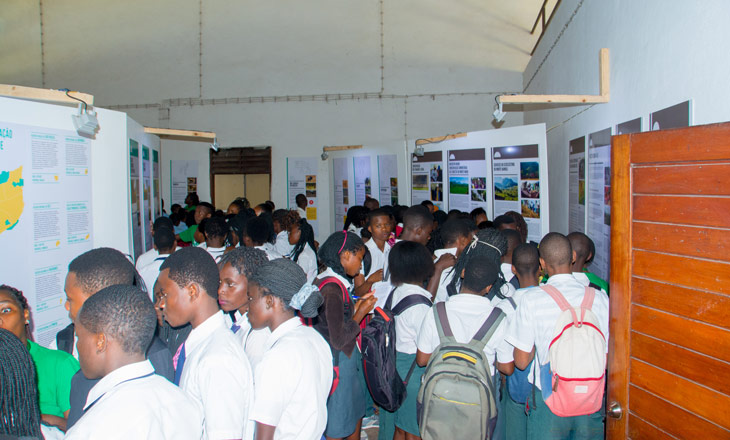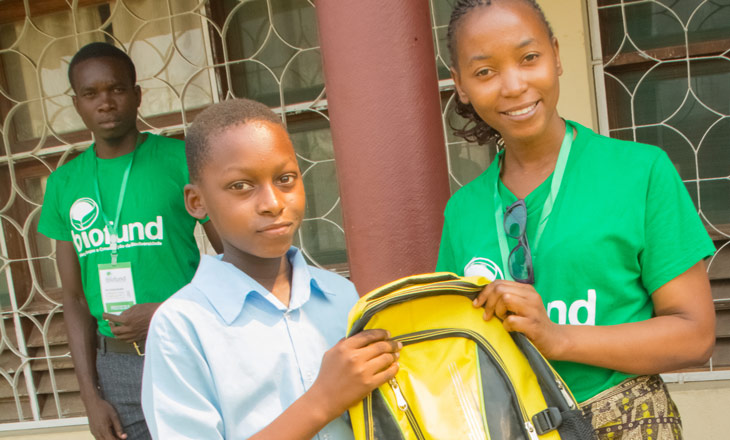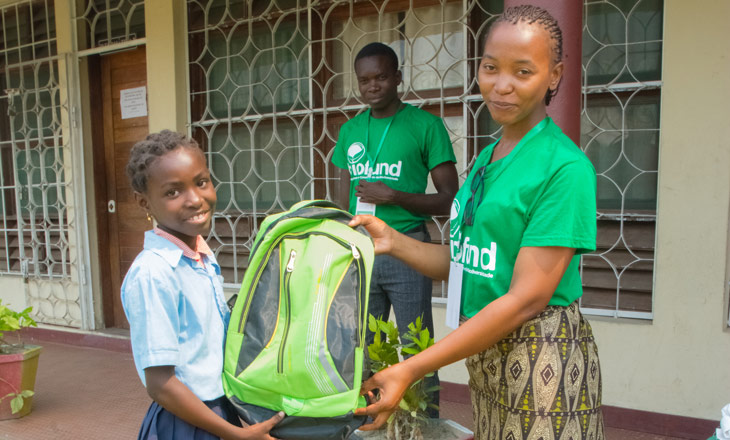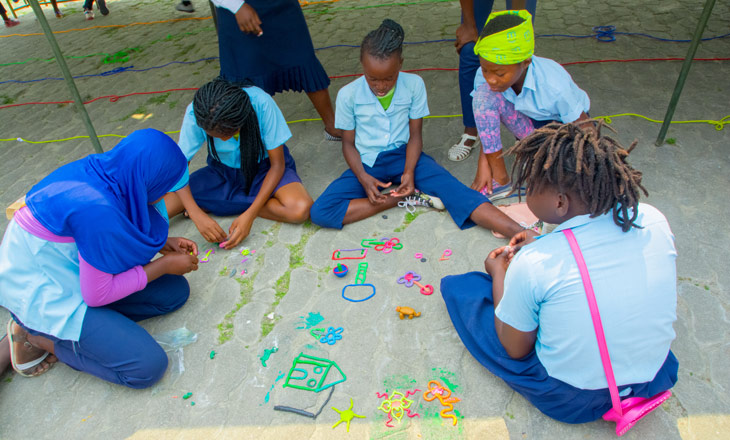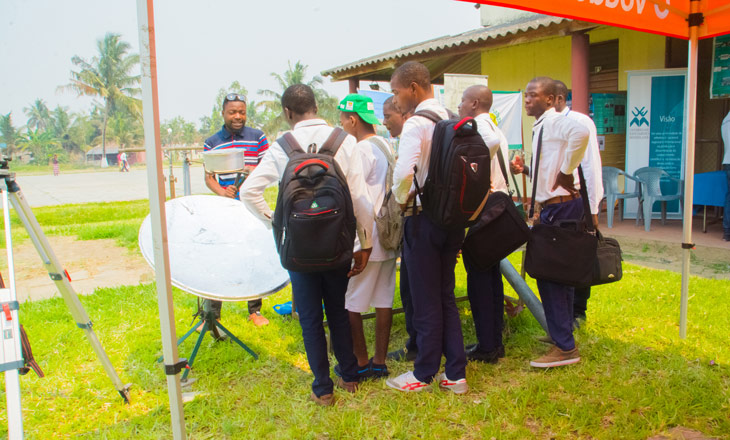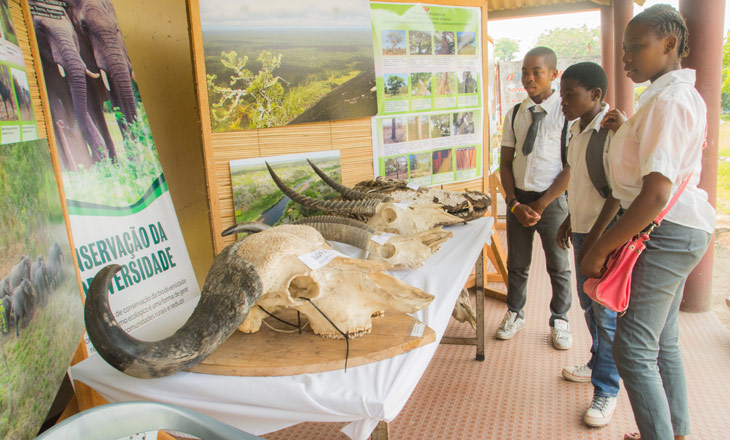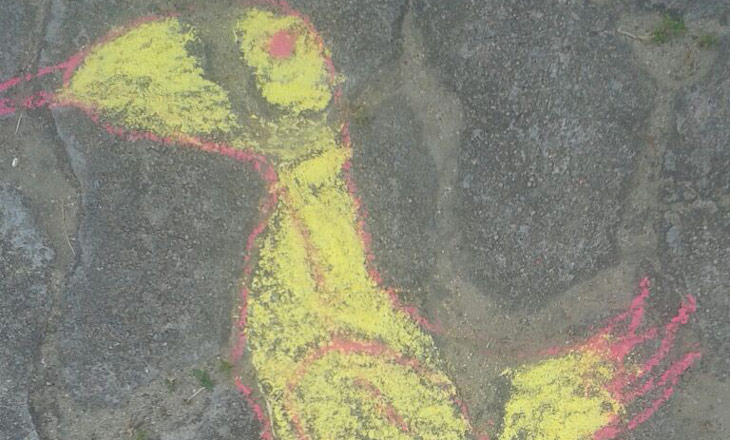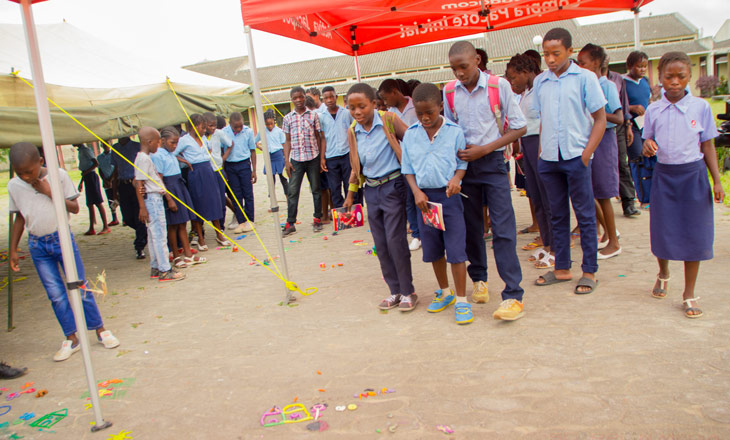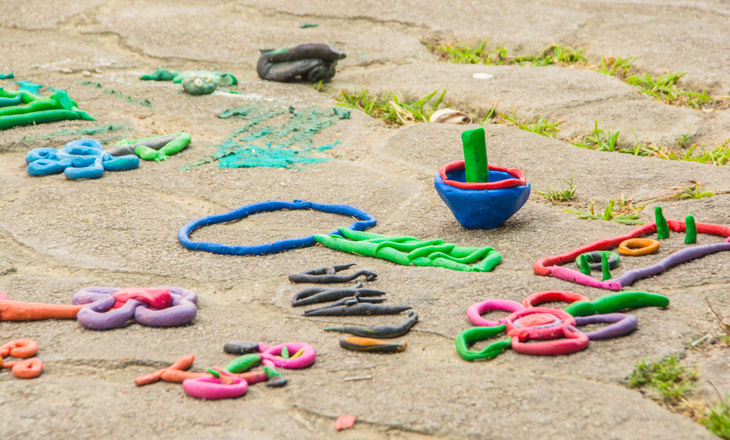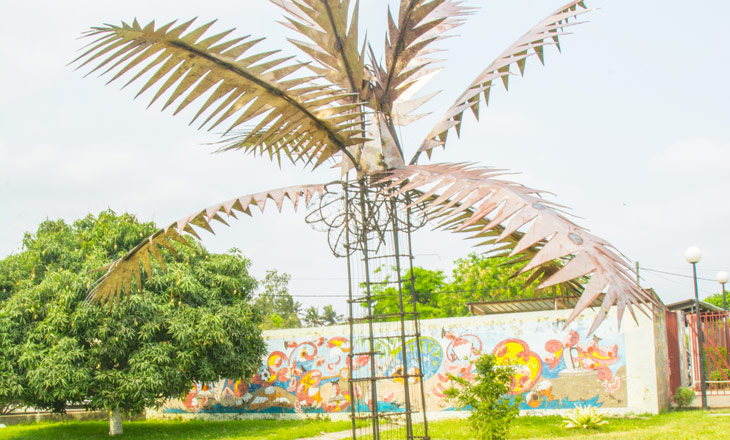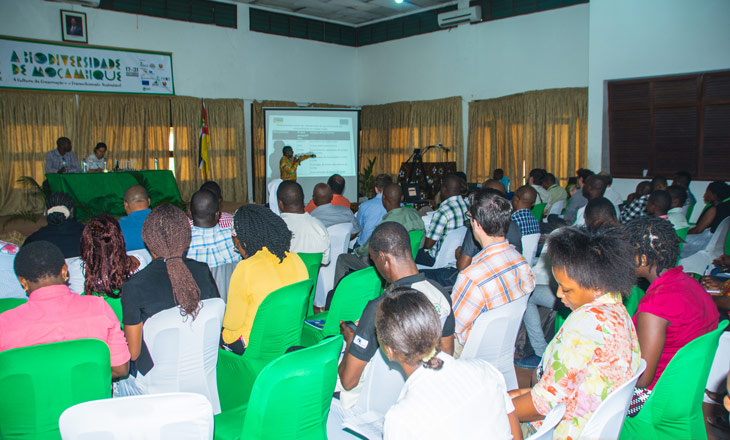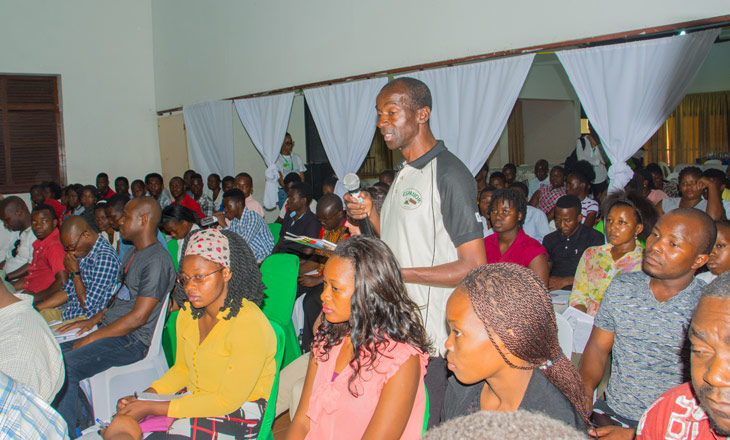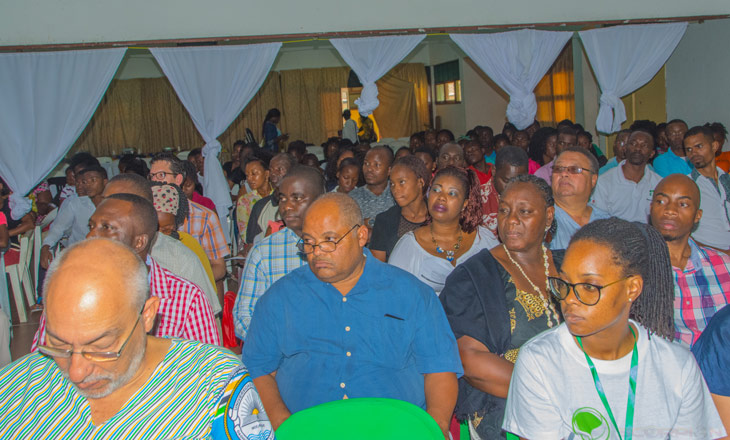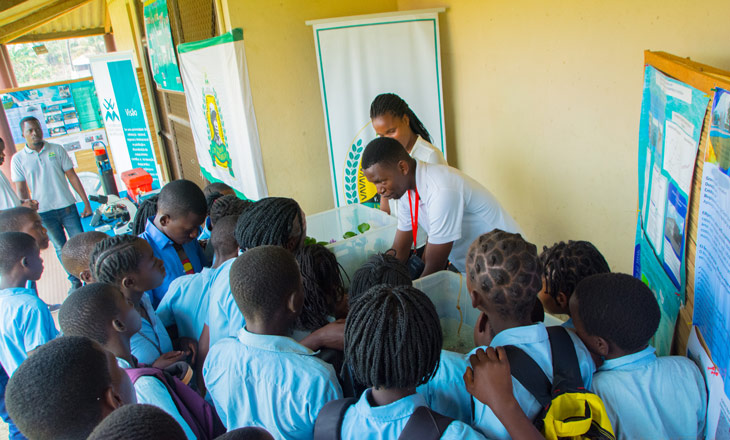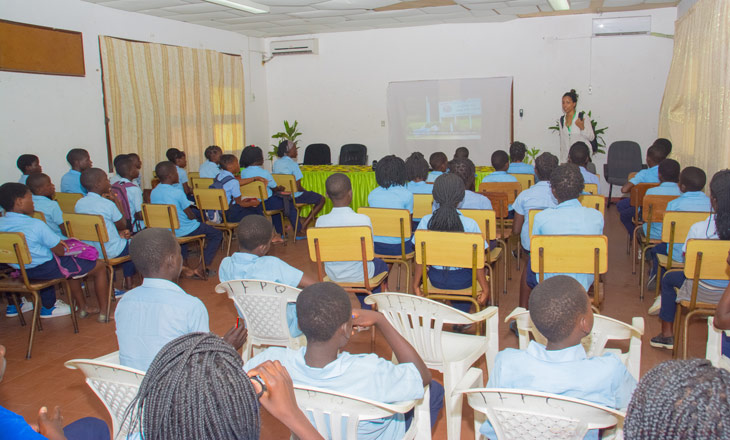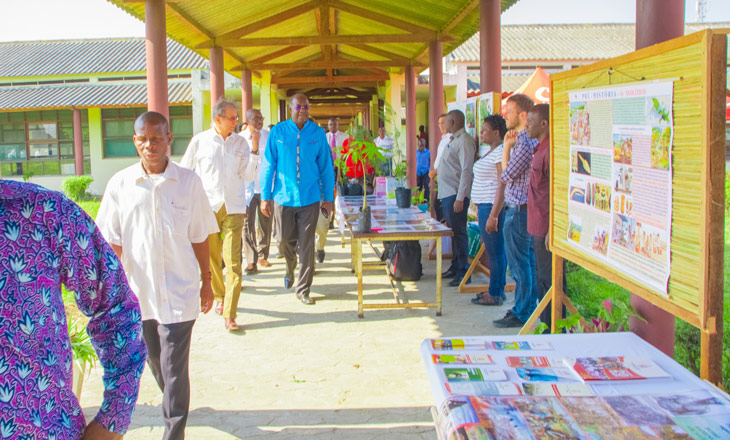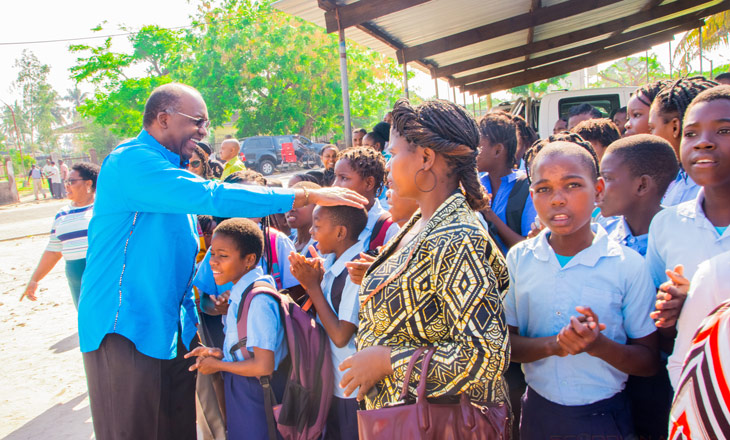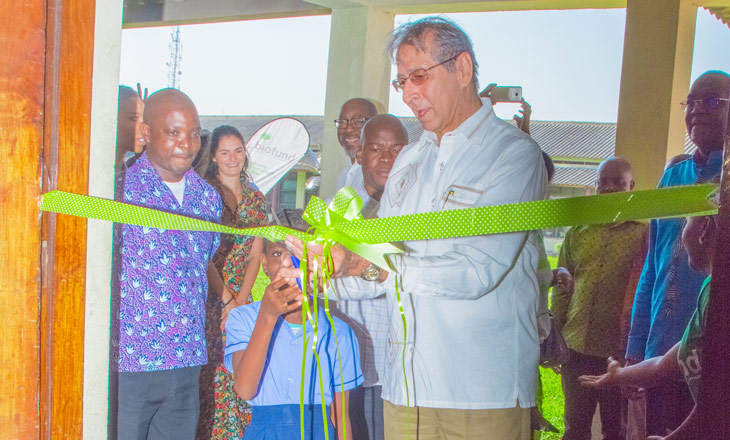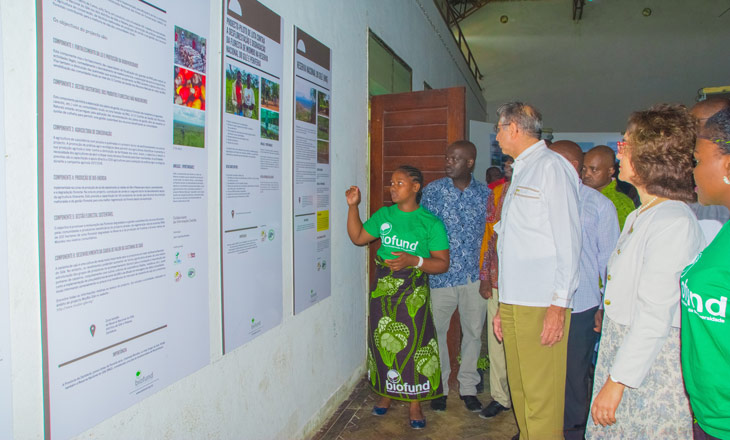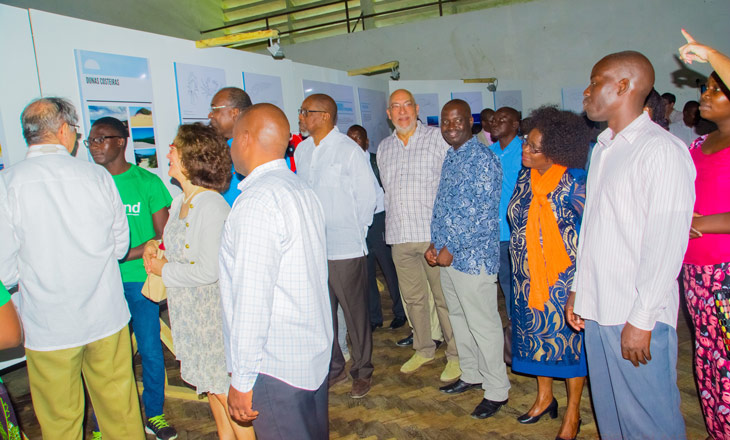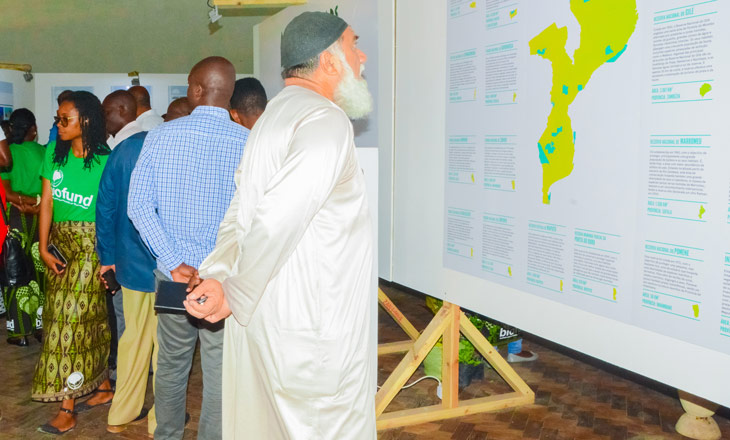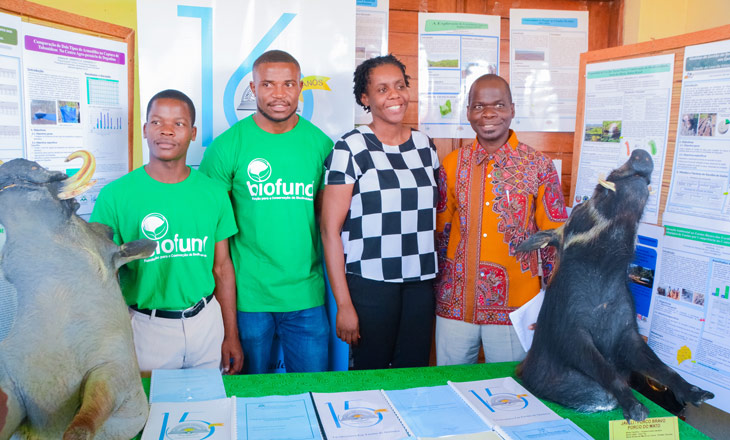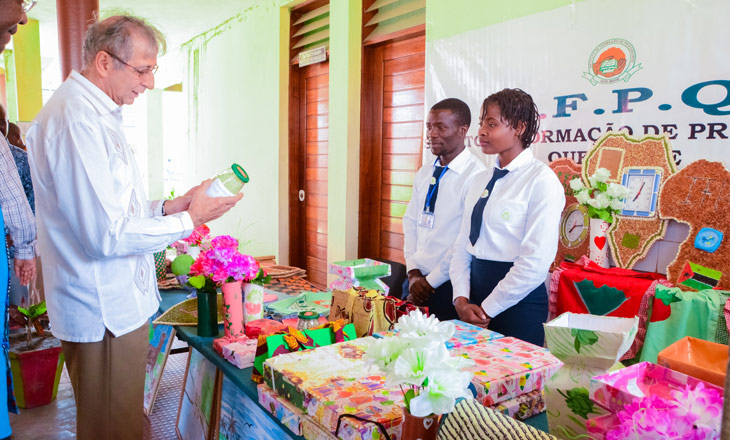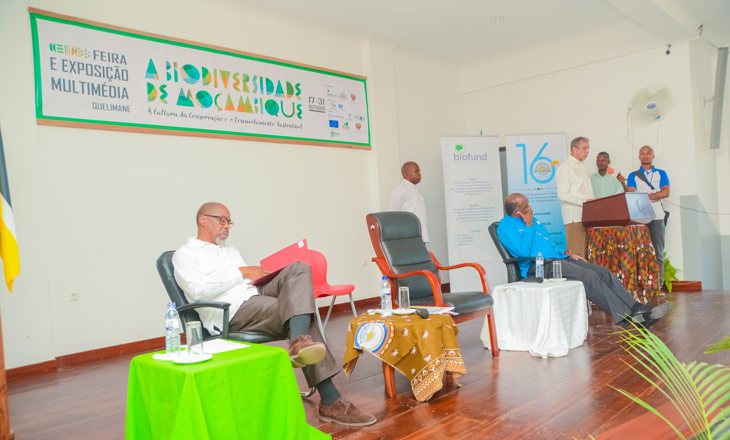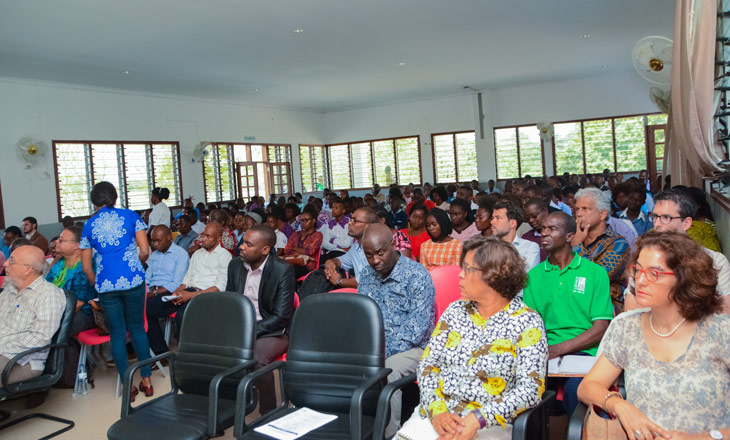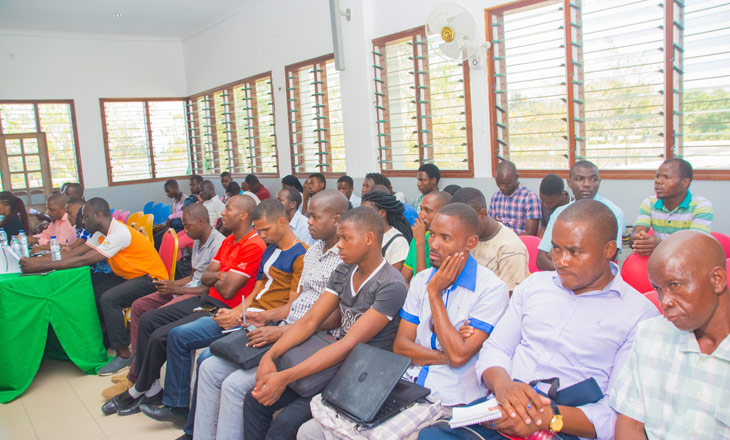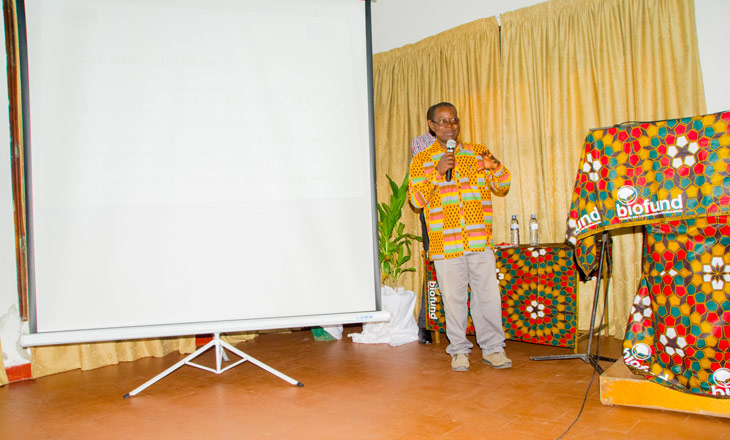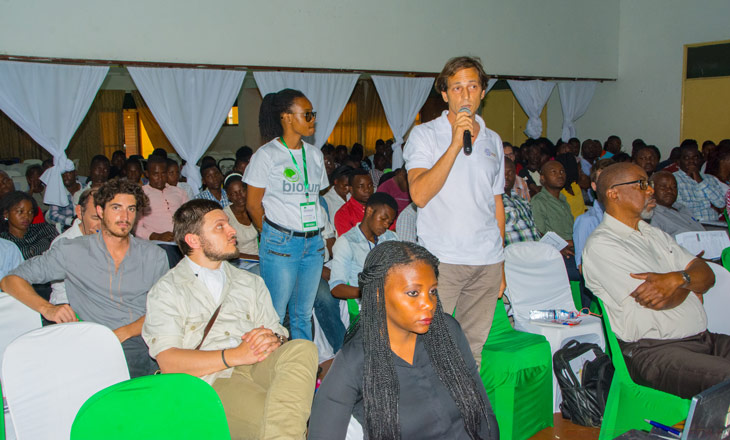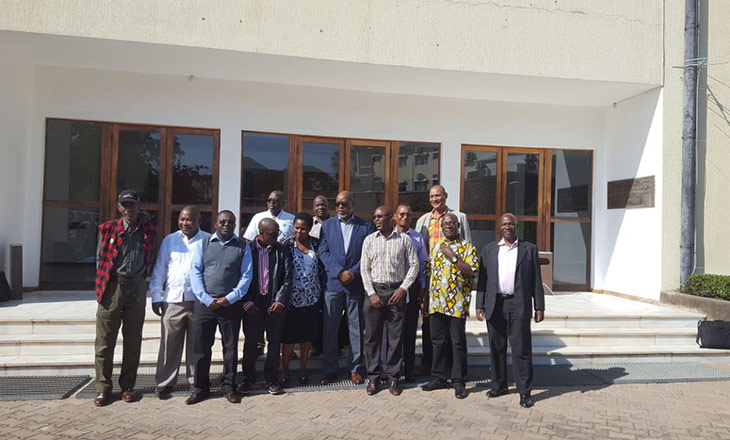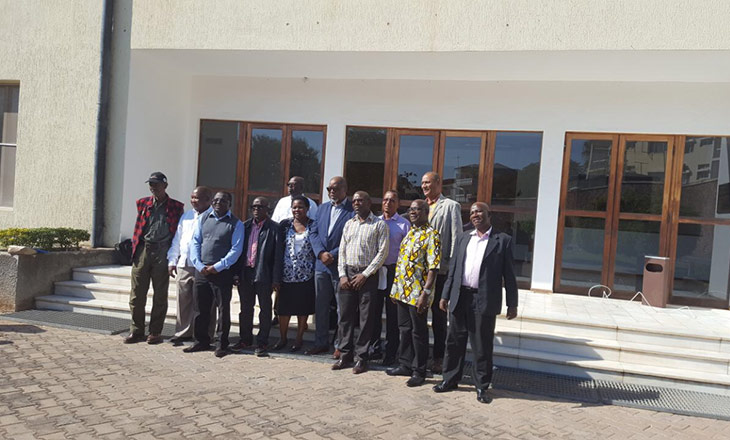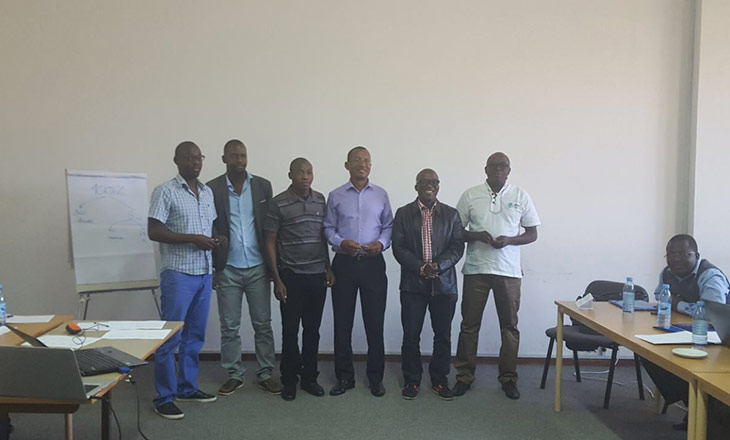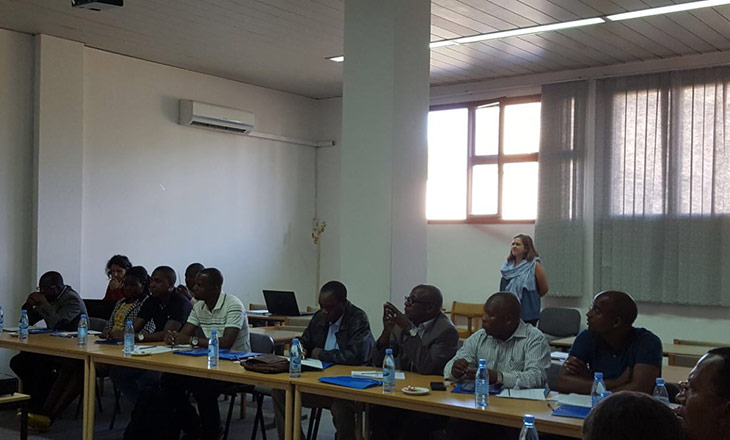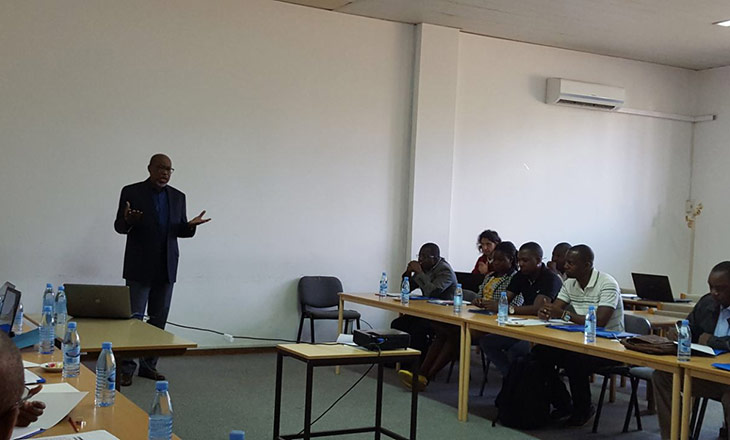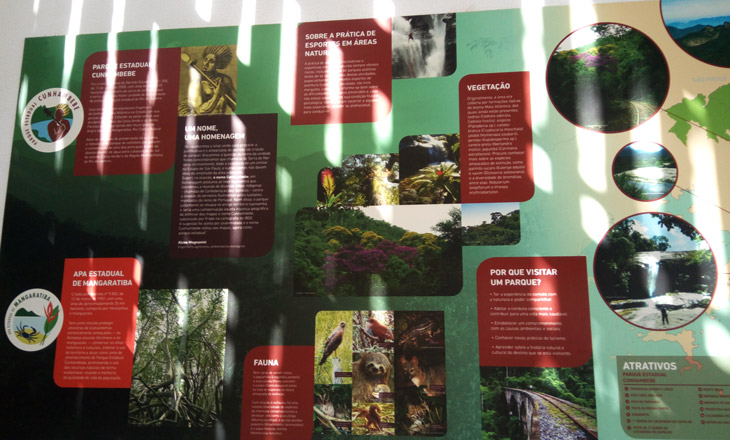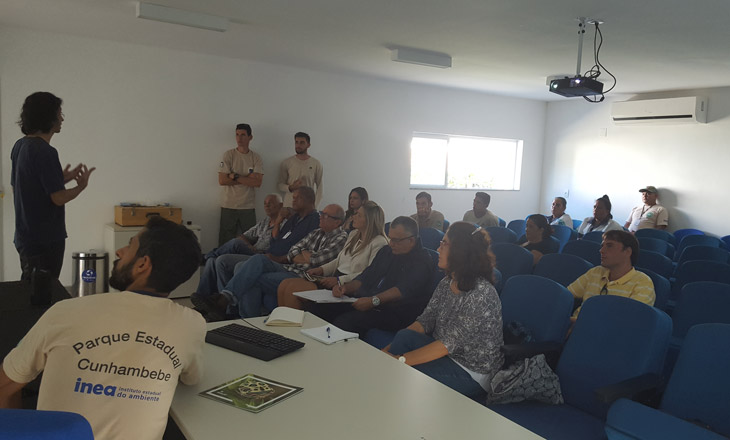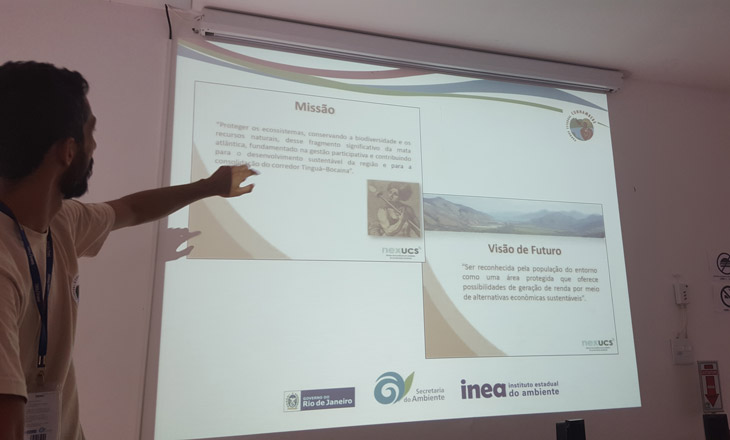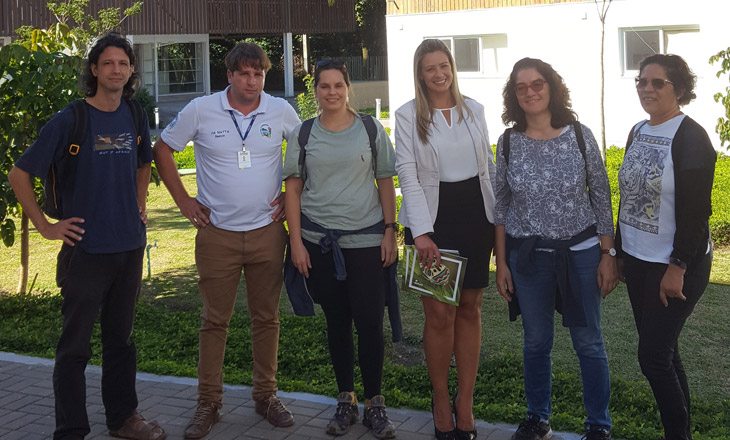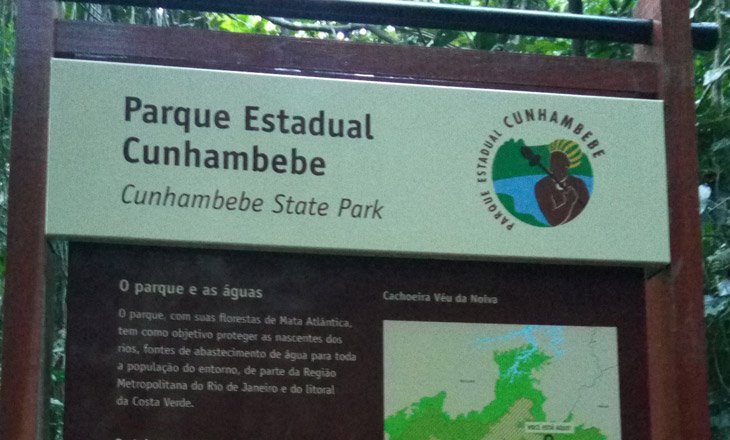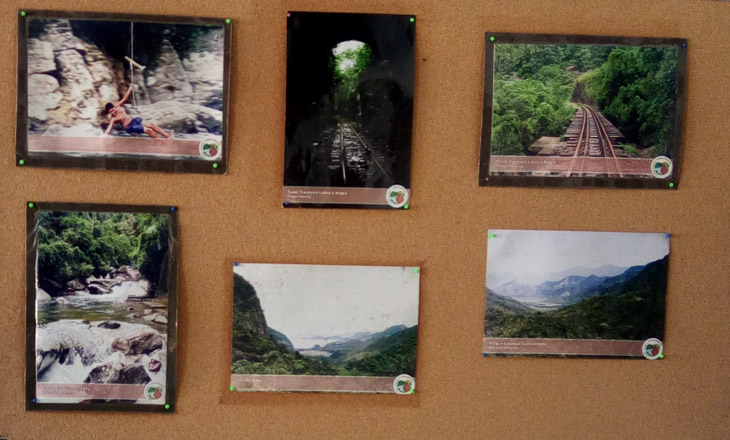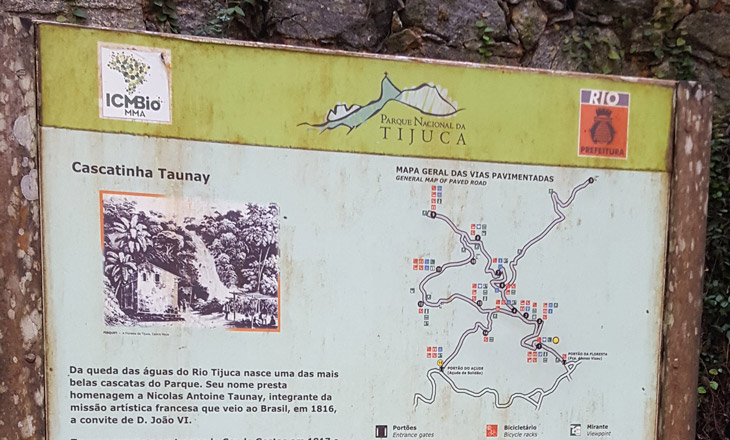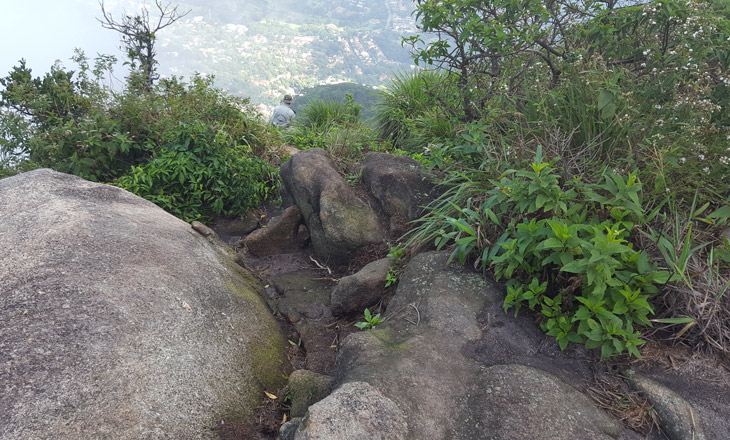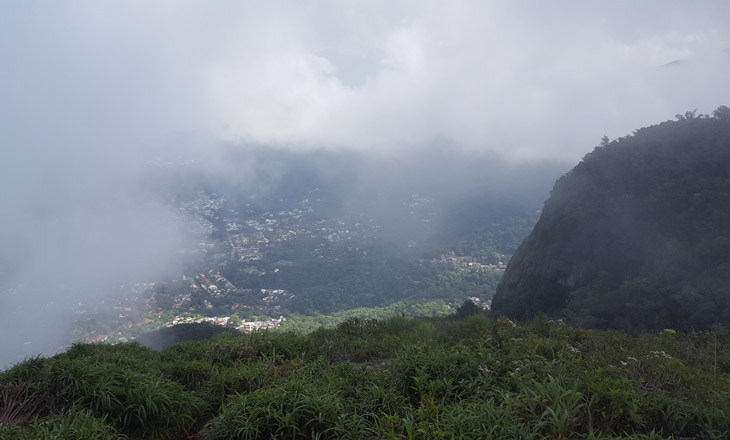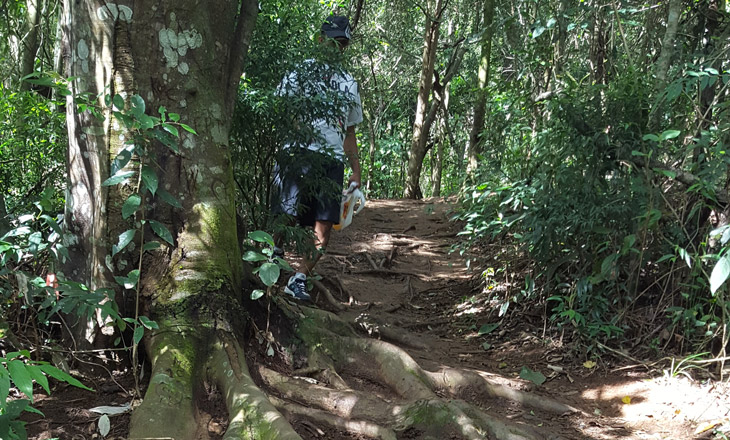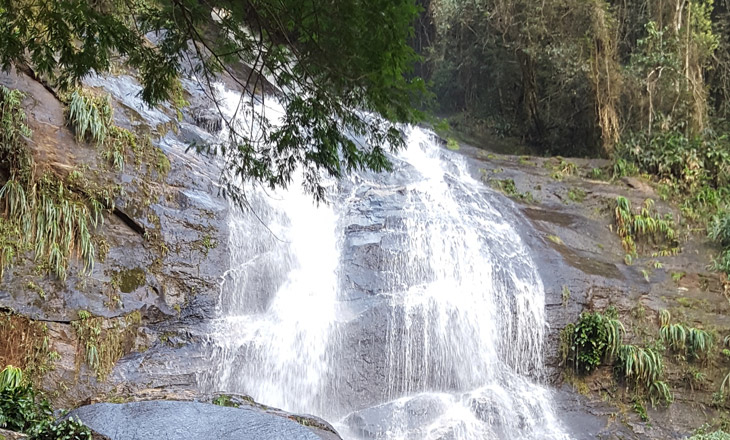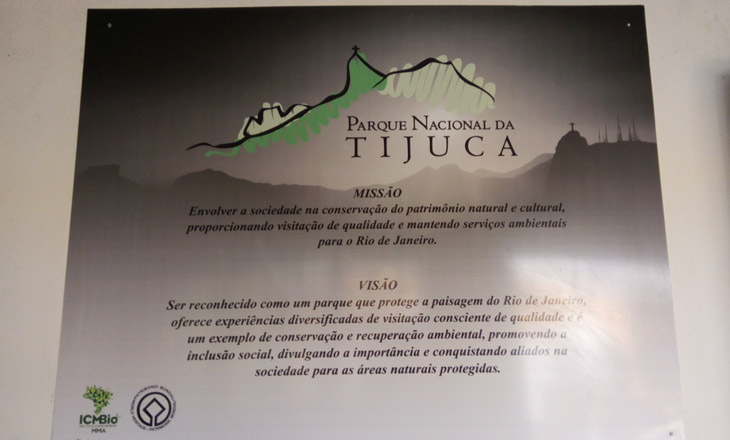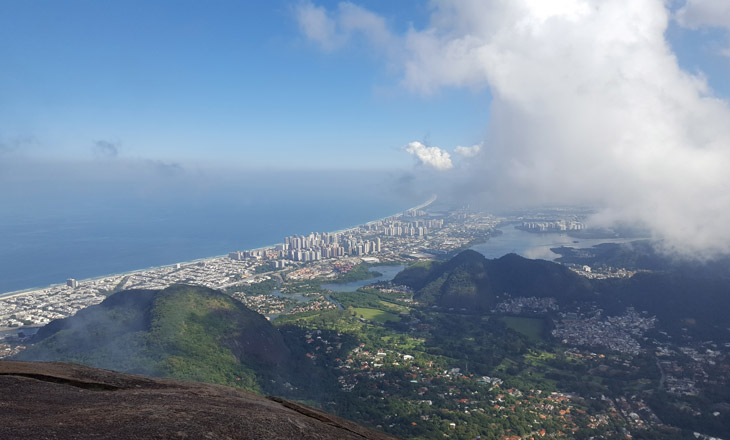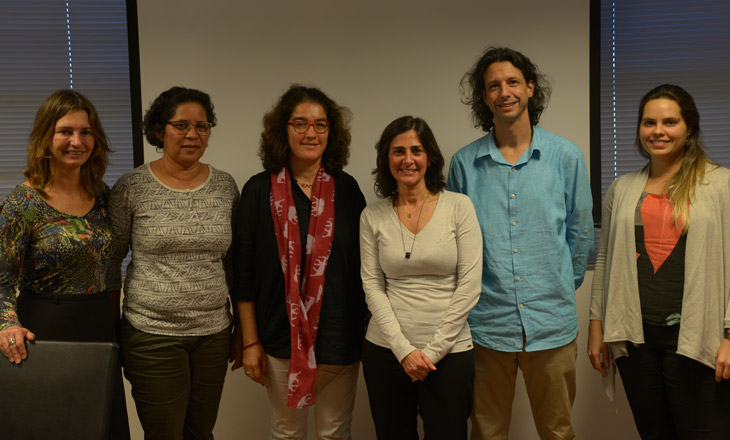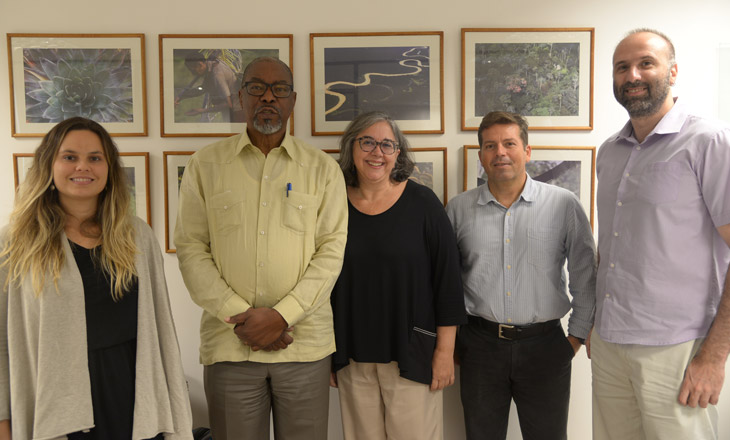A team from BIOFUND was in April 2018 at Chimanimani National Reserve, in Manica province, in a group visit with representatives of various partnerships on conservation (FNDS, ANAC, DNDR, World Bank, FFI, Carr Foundation and PPF). The main objective of this visit was to help defining and prioritizing main actions for Mozbio 2 activities. There was good understanding and engagement of the various working groups from all institutions.
BIOFUND visit to Chimanimani National Reserve
The visit increased our knowledge about the main activities on biodiversity conservation throught the various partnerships ongoing in Chimaninani, its potentialities and challenges. It was worthworth noticing the visit to the agricultural irrigation project PROIRRI in Rotanda and the activity of the sourdough association of Bandiri, in Révue river, that follows sustainable best practices for the artisanal gold extraction.
It is noticeable the great potential Chimanimani National Reserve, where the highets point of the country is localized (the famous Binga Mount, with aproximately 2454m, near Zimbabwe) with a rich biodiversity ecosystem, working with surrounding local comunities to develop sustainable developmental livelihood alternatives.
The working team was based at Ndzou camp, (that means elephant in the local language) , localized in the midle of the beautiful forest reserve of Moribane, an ecological tourism partnership of local comunities with Eco-Micaia, aiming to conserve natural forest resources side by side with a sustainable tourism business.
Conservation Areas of Mozambique
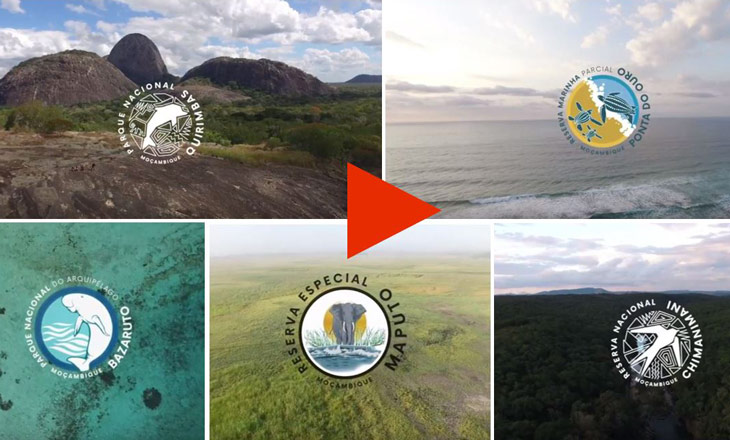
Get to know a little more of some of the most beautiful landscapes of Mozambique from the videos available on the website of the National Administration of Conservation Areas:
- Ponta do Ouro Marine Partial Reserve
- Chimanimani National Reserve
- Maputo Special Reserve
- Quirimbas National Park
- Bazaruto Archipelago National Park
Earth Hour, March 24, 2018 – Maputo, Mozambique
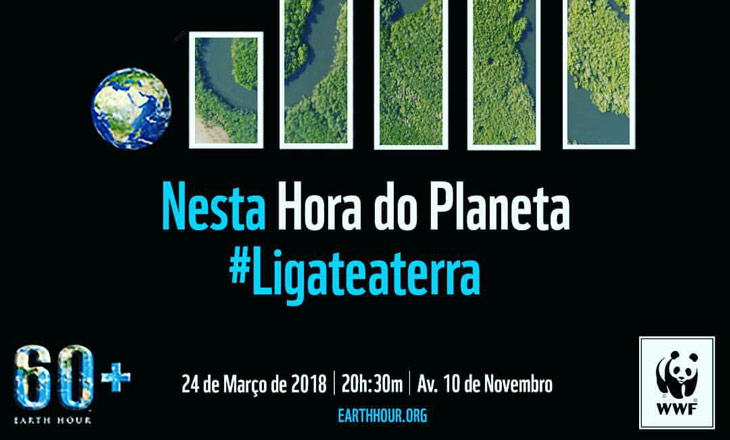
Earth Hour is a WWF initiative that began in 2007 in the city of Sydney, Australia, when about 2 million people and more than 2,000 companies turned off the lights for an hour as a form of positioning against the global warming and climate change!
This global sustainability movement has grown to include 7,000 cities in 172 countries of which Mozambique is a part – showing support for this cause by symbolically switching off their lights for an hour.
Earth Hour 2018 will take place on March 24, from 8:30 p.m. to 9:30 p.m. local time.
Prepare your solar flashlight and come join!
#EarthHour #HoradoPlaneta
Events from previous years: https://www.wwf.org.mz/hora_do_planeta/eventos/
3rd National Meeting on Mozambique Conservation Areas Co-Management Study
The 3rd National Meeting about the study on Co-management Models in the Conservation Areas of Mozambique took place in Maputo on February 2018 and the final products of the consultancy were presented:
- Analysis of Co-management Partnerships in Mozambique;
- Presentation of the Road Map and Legal Framework for Co-management Partnerships in Mozambique Conservation Areas (Roadmap for Collaborative Management of Conservation Areas in Mozambique).
The results of the study help to define good practices for collaborative management in Mozambique conservation areas, between communities, Government and investors.
A co-gestão das áreas de conservação constitui uma ferramenta essencial porque representa:
- O início de uma nova era formal de governação das áreas de conservação permitindo a partilha de responsabilidades entre os principais actores nomeadamente: o sector público, sector privado, sociedade civil e comunidades locais;
- A facilitação na mobilização do capital financeiro para a gestão assim como o capital humano globalmente disponível;
- Uma plataforma que permite a Moçambique, o acesso a uma larga lista de potenciais doadores e investidores, e reter a vontade internacional de apoiar a conservação em África;
- Oportunidade de desenvolvimento do turismo como força motor para a geração de receitas com vista ao alcance da sustentabilidade ecológica e económica das áreas de conservação.
O roteiro pretende guiar e recomendar melhorias para as parcerias das áreas de conservação da biodiversidade em Moçambique, baseado nos relatórios produzidos nesta consultoria e importa destacar dois:
- Avaliação de parcerias de gestão colaborativa (PGC) em Moçambique;
- Análise do quadro legal de Moçambique para o estabelecimento de parcerias na gestão das áreas de conservação.
Os resultados do estudo, vêm ajudar a definir boas práticas para gestão colaborativa nas áreas da conservação em Moçambique, entre comunidades, Governo e investidores. O estudo ajuda também a consolidar um quadro colaborativo, transparente que quando bem definido vai resultar em capacitação e investimento do sector privado e consequente melhoria do nível de vida das comunidades locais.
O debate concluiu e sugeriu alguns passos subsequentes, realçando:
- Os resultados do estudo serão submetidos ao MITADER para informação e definição das prioridades a seguir;
- É necessário que os participantes da reunião aprofundem a leitura dos relatórios apresentados para melhor verificação, avaliação e compreensão dos factores e indicadores de sucesso dos modelos de co-gestão apresentados bem como do estudo realizado, e a situação de Moçambique com base neste estudo;
- Existe a necessidade do país melhorar a sua posição através da definição da estratégia correcta, que pode ser estudada com recurso aos instrumentos que o estudo nos traz;
- A ANAC, está plenamente de acordo com as recomendações do estudo em prosseguir com a promoção de parcerias colaborativas nas ACs.
Para mais informações sobre o Estudo dos Modelos de Co- gestão, acesse:
To support nature conservation - 9 million euros donated to BIOFUND
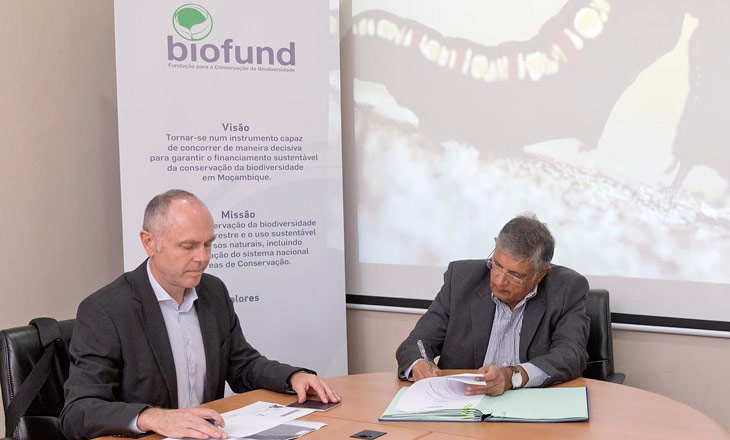
The Foundation for the Conservation of Biodiversity – BIOFUND just received from the German Government through KfW, a donation of 9 million euros for the endowment fund.
With this new grant, whose contract signed yesterday (21/12/2017) in Maputo, the total German Cooperation contribution to BIOFUND ascends to 25 million euros.
BIOFUND’s endowment also has other important subscriptions by Conservation International and GEF (Global Environmental Facility), through the World Bank, summing at this moment the equivalent of 32 million US dollars.
BIOFUND finances the operational costs of many units of the National Conservation Area System, using own resources and funds made available by the Agence Française du Development (AFD) and the World Bank.
The current list of Conservation Areas benefiting from BIOFUND funding includes the Quirimbas National Park, the Gilé National Reserve, the Environmental Protection Area of the Primeiras and Segundas Archipelago, the Chimanimani National Reserve, the Bazaruto Archipelago National Park, the Zinave National Park, the Limpopo National Park, the São Sebastião Total Protection Zone, the Maputo Special Reserve and the Ponta do Ouro Marine Partial Reserve.
BIOFUND, the country’s first environmental fund, is a private, non-profit entity whose goal is to provide sustainable financing for conservation in line with international best practices.
Photographic Exhibition “Biodiversidade de Moçambique (Biodiversidade Daqui)” (“Biodiversity of Mozambique [Our Biodiversity]”)
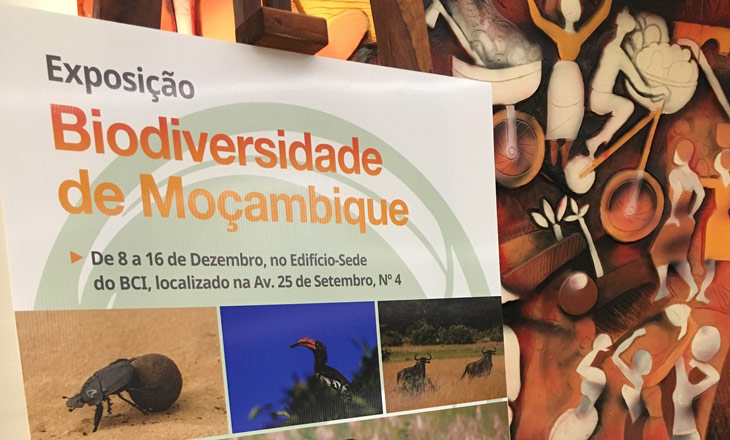
The photographic exhibition “Biodiversidade de Moçambique (Biodiversidade Daqui)” [“Biodiversity of Mozambique (Our Biodiversity)] is open to the public, from 8 to 15 December in the auditorium of the head office of the Commercial and Investment Bank (BCI).
This exhibition is the result of a photographic expedition financed by BIOFUND, and undertaken by a multi-disciplinary team coordinated by WildlifeMoz and Still Standing. Its central purpose was to produce audio-visual materials on the biodiversity of the Maputo Special Reserve (REM) and of the Ponta Do Ouro Partial Marine Reserve, in order to stimulate collaborative civic education activities which, highlight and improve understanding about the importance of the REM, in order to ensure that more effective decisions will later be taken about the future of the conservation of the biodiversity of this area. It is also intended to draw the attention of the public in general to the existence of the REM and the care to be taken when visiting it or passing through the surrounding areas.
The exhibition also displays photographs taken on the exhibition in 2011 to Mount Namuli by the group Moçambique Aventura (Mozambique Adventure). The group challenged itself to climb the highest mountains in the country. It had previously climbed Mount Binga and the Gorongosa range.
The exhibition was opened during the launch of the bio card (see here), on 8 December, and can be visited from Monday to Friday, from 08.00 to 17.00, in the Auditorium of the head office of the BCI, located on Avenida 25 de Setembro, Nº 4. Come and look at our biodiversity!
NOTE: Because of scheduling issues at the place where the exhibition is on display (the Auditorium of the head office of the BCI), the closing date has been changed, and now 15 December (Friday) will be the last day of the exhibition.
BCI and BIOFUND launch the bio card
The Commercial and Investment Bank (BCI), in partnership with the Foundation for the Conservation of Biodiversity (BIOFUND), on 8 December launched Mozambique’s first biodegradable debit card- the bio card.
This innovative product of biological origin is made from PLA (polylactic acid), a substitute for plastic derived from petroleum, which is obtained from renewable sources (maize). It can be recycled, and incinerated or deposited in landfills, because it is not toxic.
The bio card together with a BCI current account, allows the client to undertake a series of banking operations, in complete comfort and security, at any Point of Sale (POS) terminal or Automatic Teller Machine (ATM) of the Visa Electron or SIMOrede networks, in Mozambique and abroad. In addition to the banking component, the bio card is associated with the BCI social responsibility programme, under which, every time that the card is used at a POS, the BCI channels a percentage (0.04%) of the amount of the transaction to BIOFUND, without any cost to the client, thus allowing all Mozambicans to contribute actively towards the conservation of the rich biodiversity of our country. See here the poster for the bio card.
The ceremony launching the card took place in the auditorium at the head office of the BCI. Its central moments were the signing of the Memorandum of Understanding between the BCI and BIOFUND, by the Chairperson of the Executive Commission of the BCI, Dr. Paulo Sousa, and the Chairperson of the Board of Directors of BIOFUND, Dr. Abdul Magid Osman, and the symbolic handover of bio cards.
On the same occasion, the exhibition “Biodiversidade de Moçambique (Biodiversidade Daqui)” [“Biodiversity of Mozambique (Our Biodiversity)”] was opened. Until 15 December, the exhibition will display about 50 photos of rare beauty showing various species of flora and fauna, and habitats, taken in the Maputo Special Reserve (REM), in the Ponta Do Ouro Partial Marine Reserve, and at Mount Namuli. It is open to the public at the BCI head office, on Av. 25 de Setembro, Nº 4, from 09.00 to 17.00.
On this occasion, the films “The Biodiversity of Mozambique” and “The Biodiversity of the Maputo Special Reserve (REM)” were also shown illustrating the biodiversity of the country, and the landscape and wildlife wealth of the Maputo Special Reserve (REM) and of the Ponta Do Ouro Partial Marine Reserve.
You can obtain more information on the launch of the bio card at the following links:
Training Session in No Net Loss, Mitigation Hierarchy and Biodiversity Offsets - Inhambane
A training session on No Net Loss, Mitigation Hierarchy and Biodiversity Offsets took place on 28 November 2017 in the Higher Hotel and Tourism Industry School of the Eduardo Mondlane University, in the framework of the biodiversity offsets implemented by BIOFUND and by the COMBO/WCS project.
This training is part of the activities of the Civic Partnership for Good Governance (PCBG) programme, implemented by Counterpart International (CPI), which counts on funding from the United States Agency for International Development (USAID).
The training was undertaken with great support from the Mozambican government, represented by the Inhambane Provincial Directorate of Land, Environment and Rural Development, for about 30 staff members in environmental management, planning, infrastructures, research and various Government sectors and institutions, conservation areas, research institutions, civil society organisations and the private sector in Inhambane province.
The main purpose of this training was to build the capacity of participants in matters concerning biodiversity offsets through introducing the concept of no net loss of biodiversity and the application of the mitigation hierarchy so as to reconcile the development of economic activities with the conservation of biodiversity. It also included contextualisation on the legal framework for the application of the concept of no net loss of biodiversity and the implementation of biodiversity offsets in Africa, and particularly in Mozambique.
The training took place in the context of an exercise of a participatory survey of information about biodiversity in the Pomene National Reserve, undertaken in collaboration with the COMBO project, BIOFUND and the UEM, with the objective of assessing the stage of degradation of key habitats in this conservation area, so as to prepare it for potential implementation of biodiversity offsets.
Pilot study in metrics for the planning of biodiversity offsets in conservation areas - Pomene National Reserve
BIOFUND and COMBO are undertaking a baseline study in the conservation areas of Inhambane province to assess the capacity of implementing pilot areas of “concepts of aggregate offsets”.
Under the present collaboration, a pilot study is under way in the Pomene National Reserve (RNP) in Inhambane Province in partnership with the Eduardo Mondlane University (UEM), represented by the Faculty of Agronomy and Forestry Engineering to evaluate the ecological condition of the mangrove and miombo forests and the establishment of a reference level for biodiversity offset initiatives in that region, as well as assessment of the ecosystem services provided by the mangrove and miombo forests and their relationship with the communities dependent on these resources.
A multi-disciplinary team is involved in holding this study, containing an approximate total of 35 researchers, including specialists in mangroves, in miombo forests, and in terrestrial and marine fauna, sociologists, teachers and students from the classes of the UEM Master’s Courses on the Management and Conservation of Biodiversity and on Agricultural Development and Rural Economy, and staff representing the RNP.
This collaboration fits in with the interest of the three organisations in cooperating for the conservation of biodiversity, culminating with the production of baseline studies on the state of conservation and metrics of biodiversity for key habitats in the Pomene Reserve; the use and management of resources; building the capacity of various stakeholders including members of the Government, students and communities about the importance of natural resources and the future perspectives for biodiversity offset projects so as to reconcile economic development with the preservation of natural resources for future generations.
This activity falls under the Civic Partnership for Good Governance Programme (PCBG), of Counterpart International (CPI), financed by the United States Agency for International Development (USAID) and implemented by BIOFUND as the project: Biodiversity Offsets: Harmonising Development and Conservation.
10th Session of the Board of Directors of BIOFUND
The Board of Directors of BIOFUND met on November 23rd at its 10th Session. Its main agenda was to present and discuss the basis for a new strategy for BIOFUND, in the context of the greater demand for financing and the consequent growth of the institution. In addition to this theme, the main activities of BIOFUND have been discussed since the last session of the Board of Directors, with emphasis to the funding of 9 Conservation Areas (covering 6 provinces) financed by the World Bank (Mozbio Project) and by AFD (projecto Abelha).
Closing of the 3rd Exhibition and Multimedia Fair - The Culture of Conservation and Sustainable Development
BIOFUND held for the third time, from 17 to 31 October, the exhibition and multimedia fair, under the motto “The Culture of Conservation and Sustainable Development”, which once again highlighted the objectives of BIOFUND’s work on awareness of civil society (especially children and young people), to the importance and challenges of biodiversity conservation, this time with a focus on Zambézia province.
This event had a great impact at the local level, having received 12 exhibitors for the fair (DPTADER, COSV, SUSTENTA, UPQ, IFPQ, UEM, UCM, UNIZAMBEZE, ICEI, ISHCT, A POLITÉCNICA, RNG-IGF) and more than 4000 visitors, amongst students and teachers from various higher education institutions, and in particular the young people and children of about 43 primary and secondary schools in the city of Quelimane, including children from 5 schools in the districts of Gilé and Pebane who had the opportunity to visit the exhibition and the fair as well as participate in educational activities and various lectures and presentations related to biodiversity.
During the event, many of the visitors left their comments, highlighting:
“I liked the initiative, because the students take a baggage with them and they will take the message, what they saw to the other colleagues who did not come.” Professor Agnélia Pires.
“I really enjoyed the exhibition. It’s my first time to take part in one. The explanation was brief and precise, very good. Talking about biodiversity has led me to wake up on a very good reflection about the care of the nature in which we live (live), and raised my self-esteem about the conservation of the species of plants as well as animals of our country and of the whole world. ” Hermenegildo Raúl.
“Fortunately I liked everything, from the explanations of the animals and aquatic herbs, the lakes and rivers of Mozambique, the insects and reptiles, especially the turtles, etc. I hope there are more exhibitions of these … It was good! Thanks.”. Gunyia Bruno Dramusse.
“Thank you to BIOFUND for this impressive exhibition. It is an important step towards preserving the beauty and rich biodiversity of Mozambique for Mozambicans and the whole world. I am very happy that many dedicated professionals work here. Regards! “Theodora Dell- USAID.
The event at Zambézia also allowed the identification of relevant local issues and the possibility of exploring potential synergies in the short and medium term between the partners.
The closing of the exhibition was held on 31 October at the Institute for Teacher Education, which was attended by 100 participants in the last forum, where presentations and debates were held on the theme: “Environmental education and the environment: challenges for the future “, highlighting the presentations of Politecnica, Portucel and COMBO project. In the same session, a bicycle was awarded to a student of the Complete Elementary School Manhaua Expansion (1st and 2st grades), Lúcia Sitiman, winner of the contest to guess the sounds of animals. Certificates were also delivered to the 16 guides (students from UEM, Universidade Pedagógica and UniZambeze) as recognition for their daily work during these two weeks at the exhibition.
In the Radio Moçambique program “Café da manhã” (available here), emphasis was placed on this BIOFUND initiative, recognizing the importance of holding this exhibition sensitizing Mozambican society on the importance of conserving its natural heritage. “Biodiversity are all resources of our day-to-day life,” said Diogo Borges, Provincial Director of Terra, Environment and Rural Development of Zambézia. Efforts to conserve our biodiversity should start with every Mozambican – words from one of the listeners; We are all beneficiaries of the goods and services provided by biodiversity and all responsible for its conservation!
This exhibition was made possible thanks to the support and collaboration of the Pedagogic University, the Quelimane Teachers’ Training Institute (IFPQ), the University Foundation for the Development of Education (FUNDE / A Politécnica), the Pedagogic University Foundation (FUP) the Ministry of Education and Human Development (MINEDH), the Government of the Province of Zambézia and the National Administration of Conservation Areas (ANAC) and the sponsorship of the World Bank, Mozbio Project, FNDS, European Union and SUSTENTA Project.
The Culture of Conservation and Sustainable Development
In this second week dedicated to the exhibition on Biodiversity in Quelimane, we reached a total of more than 3000 visitors who had the opportunity to know more about our natural heritage exploring the exhibition with the help of guides, and increased, enriched and shared knowledge, participating in lectures and mini-courses with emphasis on the theme: Environmental Education, Coastal Erosion: Mitigation Measures.
Attention was given yesterday to the special visit of a group of 10 children (5 girls and 5 boys) selected based on their performance, from 5 schools from Gilé district (Escola Primária Completa Malema Centro and Escola Primária Completa Naheche) and Pebane district (Escola Primária Completa Musseia, Escola Primária Completa Sacani and Escola Primária Completa Mutacane), accompany by two teachers (see photos). These visitors enjoyed the program of the exhibition, which seeks through educational and recreational activities especially geared to the young public, stimulate the imagination around the biodiversity and its conservation: guided tour of the exhibition; cinema session in the educational film room on the conservation of natural resources; and animal sounds contest having the winners received prizes. This initiative of exchange of experiences of Pebane and Gilé students was carried out by COSV with the support of the European Union and the Italian Cooperation, within the framework of the project” Reinforcement of Financial Sustainability and Biodiversity of the Gile National Reserve.
In this edition of the exhibition that takes place in Zambézia, one of the great highlights is the coconut tree, an extremely important flora resource in this province, that suffers from the lethal yellowing, and for these reasons chosen as a mascot this event. After the elephant and the rhinoceros, mascots of the exhibitions of 2015 and 2016 in Maputo and Gaza, respectively, this is the first exhibition that stands out with a mascot of a plant species. The coconut mascot (attached photos), built using metal and aluminum, can be enjoyed in the garden of the Teacher Training Institute of Quelimane. Congratulations to the students Lazaro Castro Assuate, António José Manuel and Said Benjamim Dualia, from the second year of the Visual Education course at Pedagogical University of Quelimane that under the supervision of their teacher, Mahomed Vali, designed and implemented this beautiful work!
Walking towards the end of the exhibition, we present here the program for the next few days.
Conservation areas of Mozambique received 3.108 animals during 2017
The translocation of animals to Maputo Special Reserve (MSR) and to Zinave National Park (ZNP) has already finished with the introduction of 3.108 animals of different species, corresponding to 66% of the 4.712 planned.
The MSR received 2.325 animals, from which 1.161 came from the Big Game Park of Swazilandia, specifically, 498 African antelopes, 408 zebras, 194 blue wildebeest, 50 greater kudu and 12 giraffes. The Ezemvelo Reserve of South Africa provided 251 Nyalas and the Gorongosa National Park (GNP) contributed with 812 waterbucks and 100 warthogs.
The ZNP received 783 animals, from which 51 African antelopes and 2 elephants came from Zimbabwe, 387 waterbucks and 93 reedbucks originated from Gorongosa National Park and 250 buffalos came from Marromeu National Reserve.
Beside MSR and ZNP, the Official Coutada nº 9, localized in the Macossa district, Manica province, also received 200 buffalos from Marromeu National Reserve (MNR).
The translocation of various species of animals aims at improving the tourism product, resulting in the creation of conditions for tourism investment and a consequent increase in the number of visitors in the Conservation Areas.
This translocation operation represents an historical moment, being the largest ever carried out in the country, as well as marking a contribution of fauna from our own national parks (GNP and MNR).
The national conservation area system covers approximately 18,57 million of hectares, corresponding to about 25% of the national territory, including 8 National Parks, 7 National Reserves, 1 Environmental Protected Area, 20 Official Hunting Areas, 3 Community Conservation Areas and 50 Fazendas do Bravio.
The Culture of Conservation and the Sustainable Development - Retrospective from the first week of exhibition, speeches and mini-courses in Quelimane
Last Friday, the exhibition received 257 visitors, as well 50 participants on the speech session about: The Community lands delimitation: The contribution of the land tenure security to improve better life conditions to the local community in Nicoadala- Zambezia, and, Profiling of sawmills Madal and TTT Timber in Quelimane city during 2010 to 2015.
The exhibition continued over the weekend, registering approximately 116 visitors who learned more about the most important ecosystems, the habitats and the species of our natural patrimony. It still opened to the public until 31st October.
Yesterday, 23rd October, the exhibition received more than 353 visitors. Yesterday, started the mini-courses sessions, with the first class about: Seedlings and ornamental plants production, which count with the participation of 50 young students from 25 de Setembro School, and some individuals. Additionally, speech sessions were conducted about: Rice tolerance valuation on saline soils; The impact of inadequate management of solids residues in biodiversity; Artificial soil nutrition and biodiversity conservation. The exhibition and the speech sessions still opened until the last day, 31st October, and the mini courses will occur until 30th October. For further details please consult the program: Exhibition Program
The Culture of Conservation and Sustainable Development - Retrospective of the first 3 days of the Exhibition, Fair and Forum
The initiative aims to raise awareness among children and young people about the importance of biodiversity in Mozambique, with particular emphasis on Zambézia province. During this event students from various schools enjoyed participation in educational and recreational activities that stimulate the taste for art and imagination around biodiversity, as well as the visualization of educational films on the conservation of natural resources. The winner of the wild animal sound guessing game was also spotted, in which Lúcia Adelino Sitiman, from the Complete Elementary School of 1º and 2º Manhaua Expansão, will win a bicycle. Congratulations Lucia!
The biodiversity fair in Zambézia was also held during 3 days, with the participation of about 15 exhibitors from various Government institutions, academia, NGOs and conservation and sustainable development projects.
The second day of the forum was attended by around 200 people from diverse areas related to biodiversity conservation,that participated in the Public Consultation Forum of the European Union Biodiversity Support Program in Mozambique, highlighting possible actions in Zambézia province.
Presentations and debates were held on different areas related to Biodiversity Conservation, with emphasis on the conservation programs in the Gilé National Reserve, the lethal yellowing of the coconut tree in Zambézia, the exploitation and conservation of the mangrove forests that are being deforested around Quelimane, conservation alternatives based on the experience of local communities, management of water resources in Milange, and the sustainable use of natural resources on Mount Mulange in Malawi where environments similar to Mozambique mirror experiences with positive and innovative results in which we can explore learning and synergies.
The third day of the forum had about 100 participants and covered themes of “Integrated Landscape Management in Zambézia” highlighting ongoing initiatives and projects on support to agriculture and private, sustainable projects, Standing Forest and REDD +, green governance initiatives the COSV and the CIS’s syntrophic agriculture as well as possible contradictions and conflicts in communities in the Conservation Areas. There was also information and debate on the ongoing work in support of communities and biodiversity in the Archipelago of the First and Second Islands, conducted by the WWF-Care Alliance. The variety of synergies and integrated work potential that emerged as a result of information sharing among these diverse initiatives has been very positive.
The exhibition is open to the public on a daily basis until 31 October, including presentations and mini-courses under the theme “Biodiversity for communities, children and young people” (see program here), as well as the screening of films and guided visits to the exhibition. This event, which goes on in its 3rd edition, has as a mascot the coconut tree, emblematic tree of Zambezia, which was made a permanent sculpture (by the students of the Visual Education course of the Pedagogic University) that is implanted in the place of the exhibition, in IFP-Q.
Inauguration of the Multimedia Exhibition on Biodiversity
On the first day, there were more than 400 visitors, including 4 primary schools and 1 secondary school. As a complement to this event, a forum was started yesterday under the theme “The Current State of Biodiversity in the Province of Zambezia”, preceded by the official ceremony presided by His Excellency the Governor of the Province, with an audience of more than 200 participants, including members of government, partners, NGOs, civil society and students. The Forum presented the principal initiatives in the province and the mechanisms of coordination and knowledge sharing, with a lively discussion about the problem of itinerant agriculture and biomass fuels which contribute to deforestation.
This is the 3rd edition of BIOFUND’s travelling exhibition, realized this year in partnership with the Pedagogic University (UP), the Provincial Government of Zambezia, the University Foundation for Development of Education (FUNDE), the Ministry of Education and Human Development and the National Administration of Conservation Areas (ANAC), with sponsorship from the World Bank’s, MozBio project, FNDS, the SUSTENTA project, and the European Union.
Today (18th October), the Forum will continue, highlighting the “Public Consultation on the future program of biodiversity support by the European Union” as well as the theme of “Biodiversity and Conservation in Zambezia Province”.
BIOFUND grants 36.000.000 Meticals to three Conservation Areas
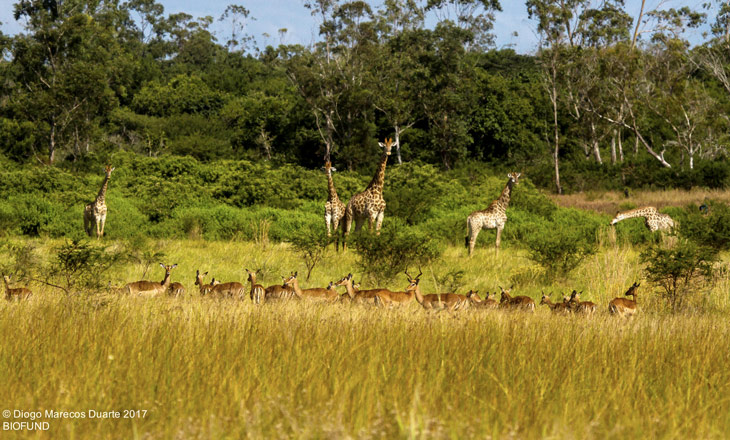
At its meeting on 21 September 2017, the Board of Directors of BIOFUND approved further financing to be granted to conservation areas over the period 2018-2020, under the 3rd Cycle of Project Bee.
Out of the 9 proposals received, a jury appointed by BIOFUND selected three of the bidders for financing. Amounts of between 9,500,000 and 15,000,000 MT are being attributed for a period of 3 years. The bidders selected are:
- Zinave National Park (terrestrial conservation area, Inhambane province);
- Bazaruto National Park (terrestrial conservation area, Inhambane province);
- Maputo Special Reserve (terrestrial and marine conservation area, Maputo province).
It should be mentioned that this financing joins those which BIOFUND has already been undertaking since 2016, under the 1st and 2nd cycles of Project Bee, benefitting the following conservation areas: the Ponta do Ouro Partial Marine Reserve (Maputo province), Limpopo National Park (Gaza province), Cape S. Sebastião Total Protection Zone (Inhambane province), Gilé National Reserve (Zambézia province), Quirimbas National Park (Cabo Delgado province) under the same financing project.
Project Bee is based on a fund that has been formed 20% by BIOFUND itself, and 80% by the French Development Agency (AFD), under the Fourth Contract on Debt Reduction and Development (C2D) signed between the governments of the Republic of Mozambique and the French Republic on 20 July 2015 for the “Project to support the conservation areas and the preservation of elephants in Mozambique” (APEM).
The BIOFUND contribution results from the income from its investment fund, formed out of contributions from German Cooperation through KfW (USD 17M), from the GEF through the World Bank (USD 3.2 M) and from Conservation International/GCF (USD 1M).
In addition to Project Bee, regarded as the standard modality for its financing, BIOFUND is active in mobilising funds for other types of financial support for conservation, and currently channels an average of 1 million USD per year, to the National System of Conservation Areas.
Multimedia Exhibition on Biodiversity
Organised by BIOFUND, this will be the third edition of the exhibition which was shown first in Maputo, in 2015, during the public launch of this foundation. In 2016 the exhibition was shown in the city of Xai-Xai, in Gaza province.
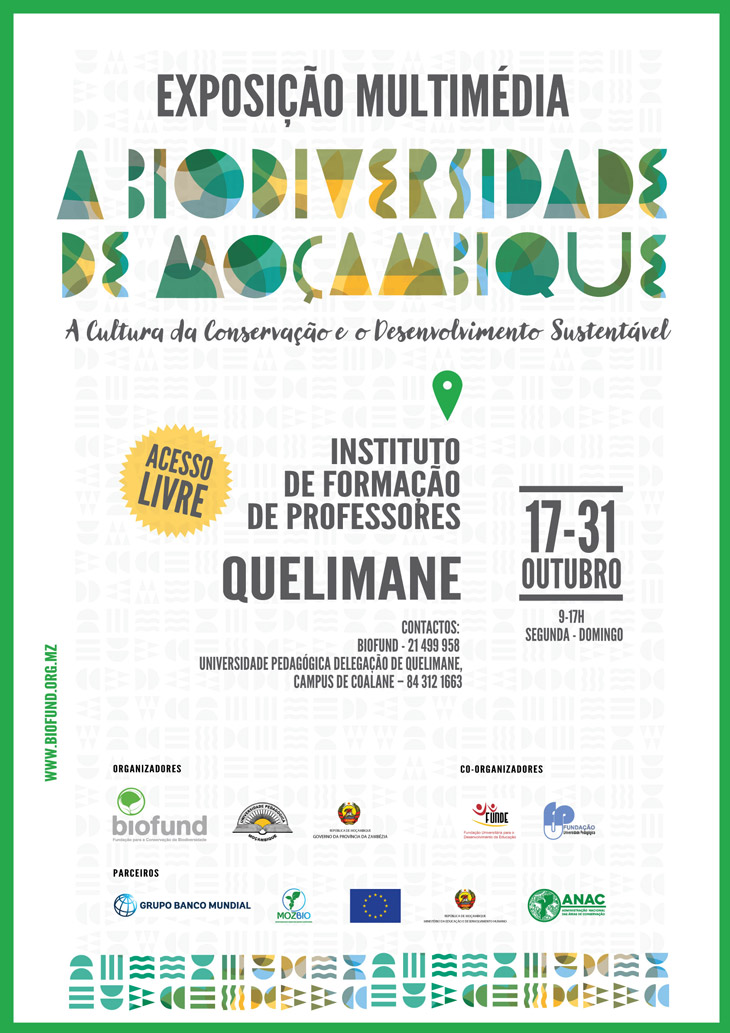
The main purpose of the exhibition is to share knowledge about biodiversity and about the many risks that hang over it, as well as to publicise initiatives to conserve and value our rich natural heritage. Thus The Culture of Conservation and Sustainable Development will have a special focus on Zambézia province.
The joint organisers of this exhibition are the Pedagogic University (UP) and the Quelimane Teacher Training Institute (IFPQ). This initiative has also enjoyed the support of the University Foundation for the Development of Education (FUNDE/A Politécnica), of the Pedagogic University Foundation (FUP), of the Ministry of Education and Human Development (MINEDH), of the National Administration of the Conservation Areas (ANAC), and of the Zambézia provincial government.
Zambezia has been chosen for the current stage because of awareness of the challenges – and also the opportunities – that are posed in this province for the conservation of biodiversity, and the interest shown by some national and international partners who are financing important projects in this part of the country.
The event is sponsored by the World Bank, the MozBio project and the European Union. The various exhibition panels are the result of collaboration between BIOFUND and several research institutions.
The exhibition will be held on the premises of the Quelimane Teacher Training Institute and will resort to a variety of communication technologies to facilitate the interaction of the public with the material on display.
The main activities will be guided visits to the exhibition, lectures, seminars, the showing of films, and educational games with the aim of making the new generations aware of environmental questions and awakening their interest in nature.
The formal invitation and the detailed programme will be distributed shortly.
Operação Caco Língamo - Save the date
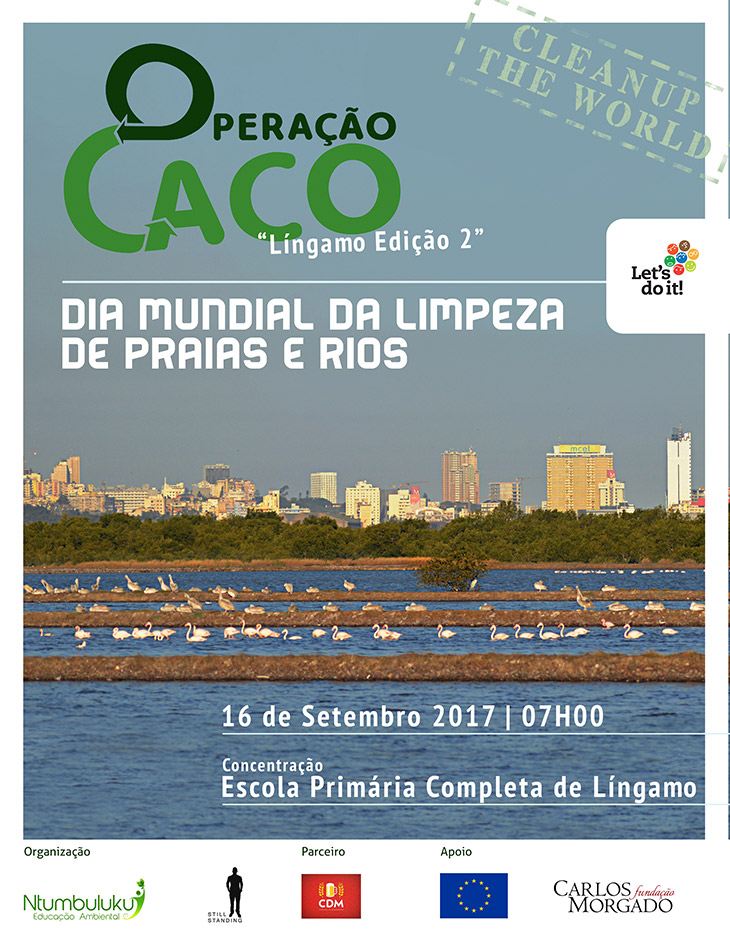
The Environmental Education Cooperative Ntumbuluku and partners present Operação Caco – Língamo, happening on September 16 (Saturday), from 07h30 to 10h30 at Língamo Salines in Matola A. This cleanup will be allusive to the celebrations of the World Day of Cleanliness of the Beaches and Rivers, and is framed in the civic movement Let’s Do it. Click here for more details.
Creating an Enabling Legal and Institutional Environment for the Harmonization of Development and Biodiversity Conservation in Mozambique (Biodiversity Offsets)
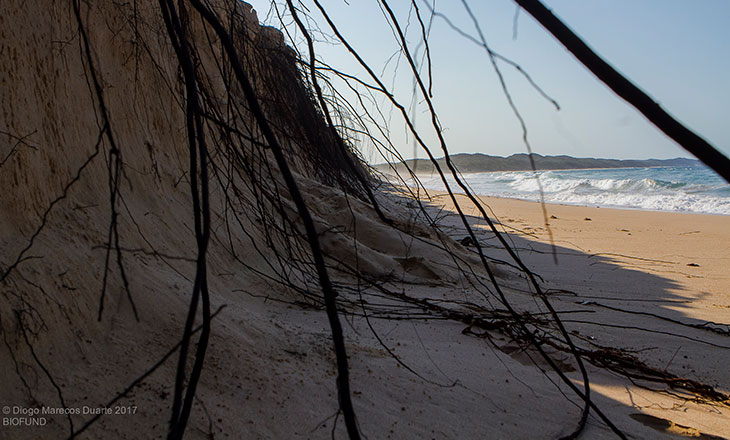
The Foundation for the Conservation of Biodiversity will take part in the USAID program Parceria Cívica para Boa Governação, implemented by Counterpart International focusing on strengthening the impact of civic activism to improve accountable, effective democratic governance in Mozambique, to protect biodiversity. A grant agreement between the parties was signed on July 17, 2017.
BIOFUND will foster civic activism to advocate for the improvement of the legal framework that promotes economic development in tandem with the protection of the natural renewable resource base for a “No Net Loss” concept of biodiversity.
At the national level, BIOFUND will advocate for the development of a specific No Net Loss Decree; at the same time, will help to improve the regulations supplementing the new Conservation Law and providing inputs into the revisions of the Environmental Law and other relevant legislation to influence the wider policy environment for No Net Loss. At the local level, the project will equip local communities and civil society organizations in Conservation Areas in Inhambane Province with skills and knowledge through training sessions, and help them to engage in constructive dialogue on No Net Loss and Biodiversity Offsets to preserve or improve the quality of the natural resources upon which they depend for their livelihoods.
BIOFUND organizes participatory training for Drawing up Projects
BIOFUND organised, from 24 to 28 July, a training session on drawing up conservation projects, taking as an example the Terms of Reference for the 3rd Cycle of Project Bee. The event took place in Maputo city, and was attended by about 25 participants, including the administrators of the Conservation Areas, accompanied by one staff member from the area of planning and finance, and invited representatives of the National Administration of Conservation Areas (ANAC).
This was the second time that BIOFUND brought together the managers of the conservation areas in order to inform them of the procedures necessary to bid for financing from BIOFUND. The first training session was held in 2016, focusing on the administrative and financial procedures for implementing projects financed by BIOFUND.
The training was designed to provide broad and detailed understanding of each of the technical stages and procedures necessary for drawing up project proposals to bid for the sources of funding available at BIOFUND. The event allowed the clarification of doubts and held exercises in application as a way of practicing the concept and testing the process.
This training culminated with a positive assessment of the participants, who reiterated the need to hold more courses of the kind in coming years, involving more staff from the Conservation Areas, in order to ensure more and better use of what was learnt.
BIOFUND mission visits the Brazilian Biodiversity Fund
In July, a delegation consisting of the Director of Programmes, the Director of Administration and Finance and the Technical Advisor of BIOFUND made a working visit to FUNBIO – the Brazilian Fund for Biodiversity – under the existing partnership between the two institutions, and so as to give continuity to the preceding visit by the Executive Director of BIOFUND to that organisation at the start of July.
This partnership with FUNBIO envisages a series of activities of technical support for BIOFUND with the aim of ensuring implementation of best practices in complying with its mission.
FUNBIO is one of the oldest environmental funds internationally, since it began its operations in 1996. It is an innovative private mechanism, set up to develop strategies that contribute towards the implementation of the Convention on Biological Diversity (CDB) in Brazil. In 21 years of operation, it has acted as a strategic partner of the public and private sectors and of civil society in conservation initiatives.
Over the two decades, FUNBIO has supported: 270 projects of 232 different institutions, 310 protected areas covering 67 million hectares; benefitting 7 biomas, and with about USD 600 million administered.
The BIOFUND visit had two goals: familiarisation with the history of the development and institutional evolution of FUNBIO, current activities, main challenges and opportunities; and sharing experience in the technical and financial area, with special stress on monitoring, disbursement procedures, accountability, financial sustainability, management of assets and institutional communication.
This exchange of experience, which lasted for about 10 days, was characterised by successive meetings with the various areas of operation of FUNBIO, where new work methods and approaches were identified, which could be adapted and adopted by BIOFUND.
Field visits were also held to the Tijuca National Park – one of the best conservation units in the country – and to two FUNBIO beneficiaries, namely the Cunhambebe State Park, resulting from the use of environmental compensation funds of Chevron (legal obligations), and BRBIO an NGO specialised in research on marine themes, particularly corals, and in raising environmental awareness. The objective of these visits was to get to know the work of FUNBIO on the ground and to explore possible opportunities for interchange between conservation areas.
In general, the visit to FUNBIO was extremely advantageous and made an impact, especially in terms of the lessons learnt about the system and structure of how FUNBIO functions and the opening of space for short and medium term partnerships.
Executive Director of BIOFUND on the delegation of the Ministry of Land, Environment and Rural Development mission to Brasília
The Executive Director of BIOFUND – Foundation for the Conservation of Biodiversity, Luís B. Honwana, visited Brazil from 11 to 18 June, by invitation of the World Bank, in the capacity of advisor to the delegation of MITADER, for contacts with various federal bodies in the conservation sector.
The purpose of this visit was to prepare the Plan of Action for the trilateral Brazil/ Mozambique/ World Bank agreement, in the framework of South-South cooperation, which was recently signed in Maputo.
This Memorandum of Understanding covers a wide range of matters ranging from territorial planning to biodiversity and even to mitigation and adaptation to climate change.
According to the World Bank, some of the specific objectives of the study include, but are not limited to: effective reforms of public policies for the environment and conservation agriculture; innovative measures to increase land tenure regularisation; planting technologies for restored areas; development of the value chain and promotion of the rural entrepreneurship of the smallholders; and also the potential of public-private partnerships to provide rural credit flows to small farmers and agro-business.
Notre Mer, Mar Nosso – Our Sea, our future (from 6 to 16 June)
In 2017, Mar Nosso (Our Sea) will be organised around World Oceans Day, celebrated on 8 June, in partnership with MIMAIP and UNESCO.
This 4th edition of the Mar Nosso meetings will be an opportunity, as in every year, to inform ourselves and to debate the future of our oceans, particularly of the Indian Ocean. It asks how we all (authorities of the countries bordering the Mozambique Channel, scientists, representatives of civil society and communities) can come together so that we can sustainably exploit their resources and their extraordinary biodiversity? How can we manage, how can we co-administer, “Our Sea” together?
During these weeks of activities, it is intended, through a programme with scientific debates, a seminar on the Law of the Sea, a conference on coral reefs, the showing of a film on Japanese fishing women, activities for children, discussions and an art exhibition, to bring some elements for reflection about this complex matter.
For more details on the programme for 6-16 June, consult the link.
Celebrations of World Oceans Day: 8 June
As part of the celebrations of World Oceans Day, which is celebrated on 8 June, two conferences will be held, in the Fisheries Museum, on the future of our oceans: on coral reefs (8 June), and on marine innovation in Mozambique (9 June). The highly regarded BIOFUND exhibition on the marine wealth and biodiversity of Mozambique will form part of the celebrations of this day, since it will be displayed during the conferences. These conferences are organised by the French Embassy and UNESCO in partnership with the Ministry of the Sea, Inland Waters and Fisheries and the Fisheries Museum. They promise to bring together scientists, academics, students, influential figures and civil society in a debate to raise awareness of the importance of this great reservoir of biodiversity. See here the programme of the conferences:
5ª Assembleia Geral da BIOFUND e evento temático sobre Hotspot de Biodiversidade Maputaland-Pondoland-Albany
In the next 2 years, the Foundation for the Conservation of Biodiversity (BIOFUND) will spend almost 4 million USD in financing the National System of Conservation Areas. This was one of the main decisions of the 5th General Assembly of BIOFUND, held in Maputo on 24 May 2017. In addition to members of the institution, there took part in this General Assembly observers and guests including representatives of the diplomatic corps and cooperation partners.
The activity reports and accounts of 2016 were presented and approved, as were the plan of activities and budget of the Foundation for 2017. Those present congratulated the Executive Commission for the gains and the rapid and efficient development of BIOFUND as well as recalling the challenges that this growth entails.
Proposals were also presented for the admission of new members to the Board of Directors, the Supervisory Board and the General Assembly of BIOFUND which were accepted unanimously; at the same time Bruno Nhancale and Natasha Ribeiro left the Board of Directors for personal reasons and the replacement as representative of KfW was announced of Thomas Wollenzien by Ralph Kadel, both on the Board of Directors and in the General Assembly.
Among the new members are individuals and institutions with skills and experience in the area of conservation of biodiversity widely recognised nationally and internationally, namely Prof Dr Jorge Ferrão and Prof Dr Narciso Matos (Board of Directors), Centro Terra Viva (CTV) and Mozambican Association of Safari Operators (AMOS) (Supervisory Board), and Dr. Cornélio Ntumi, Sean Nazerali, Dr. Adriano Macia, Dr. Salomão Bandeira, Dr. Valério Macandza, the Community Development Foundation (FDC), the Wildlife Conservation Society (WCS), and the Joaquim Chissano Foundation (General Assembly). For more details about the members of the General Assembly click here.
As is now the BIOFUND tradition, this assembly had, as a complementary event, a moment of interaction and debate, this time on the theme of the Maputaland- Pondoland- Albany Biodiversity Hotspot, our responsibility – chaired by Prof Dr Jorge Ferrão, Vice-Chancellor of the Pedagogic University. This hotspot is an important component of our natural heritage, which extends across parts of South Africa, Swaziland and Mozambique. The event included a multi-media exhibition on the Maputo Special Reserve, resulting from an expedition undertaken by a multidisciplinary team.
Among the various interventions during this session, there stood out the presentations made by Dr. Bruno Nhancale on the main habitats and characteristics of Maputaland-Pondoland-Albany; by Dr. Marcos Pereira on the marine fauna, flora and habitats; and by Dr. Hermenegildo Matimele on the terrestrial fauna, flora and habitats, stressing the rare and endemic species of plants.
There also stood out the presentation by Andrew Zaloumis, Executive Director of the iSimangaliso Wetland Park, in South Africa, who spoke about the criteria and challenges in creating the first area in southern Africa to be declared a World Heritage site by UNESCO.
The debate counted on participation from the public (consisting of members of the conservation community, specialists and academics in various areas related with biodiversity, as well as young university students, representatives of governmental and non-governmental organisations, and the diplomatic community) in an exchange of impressions about the importance of this great heritage and also about the threats hanging over it. For more information on the debate visit the page of the event here.
The Chairperson of the Board of Directors of BIOFUND, Abdul Magid Osman, in response to the concerns raised at the colloquium and during its preparation proposed that the conservation community should make its voice heard on the need for coherence in government policy and say no to the Ponta Dobela port project.
AVISO - Alteração da data da 5ª Assembleia Geral da BIOFUND e evento temático sobre Hotspot de Biodiversidade Maputaland-Pondoland-Albany
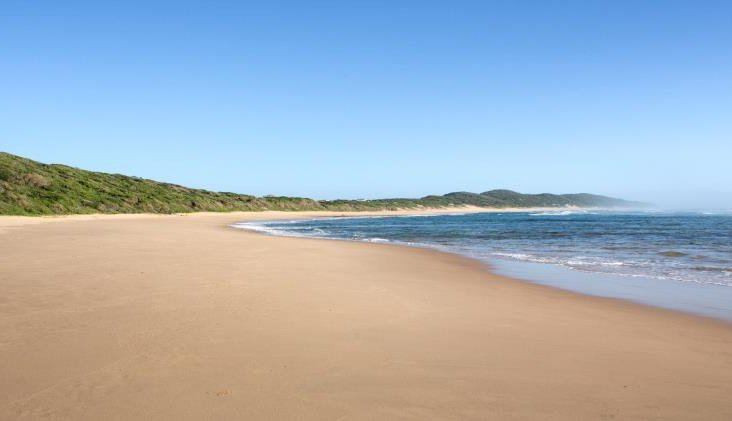
A BIOFUND informa a alteração da data da sua 5ª Assembleia Geral assim como do evento temático sobre o Hotspot de Biodiversidade Maputaland-Pondoland-Albany, para o dia 24 de Maio de 2017, das 15h30 às 19h30, no Hotel Cardoso em Maputo. O convite formal e o programa detalhado será distribuído em breve. Para mais detalhes clique aqui.
5ª Assembleia Geral da BIOFUND e evento temático sobre Hotspot de Biodiversidade Maputaland-Pondoland-Albany

A BIOFUND vai realizar a sua 5ª Assembleia Geral assim como um evento temático sobre o Hotspot de Biodiversidade Maputaland-Pondoland-Albany, no dia 25 de Maio de 2017, das 15h30 às 19h30, no Hotel Cardoso em Maputo. O convite formal e o programa detalhado será distribuído em breve. Para mais detalhes clique aqui.
Operational funds for Conservation Areas
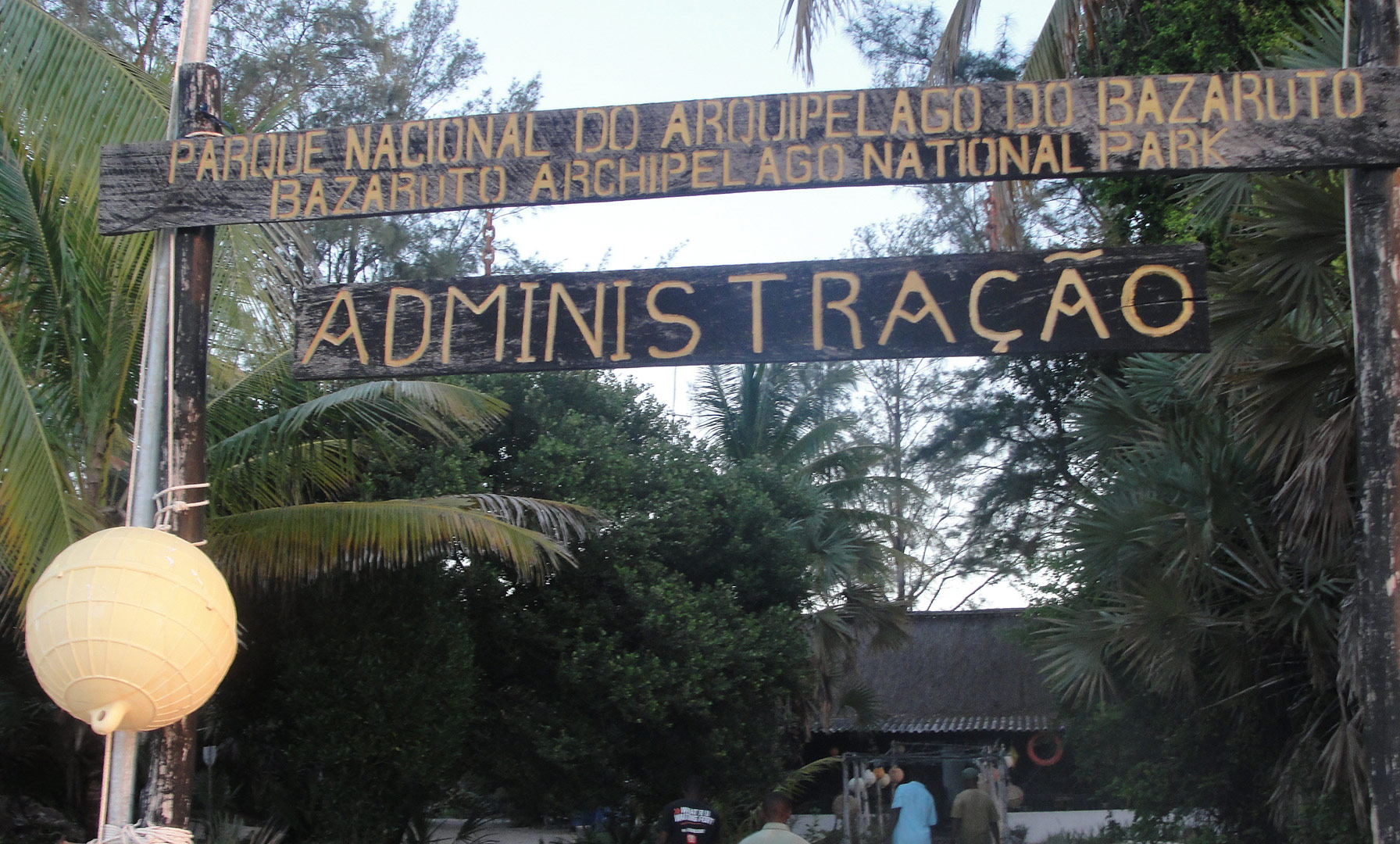
BIOFUND began in 2017 to channel funds to support operational costs of the MozBio project for 8 of Mozambique’s Conservation Areas (the Quirimbas National Park, the Gilé National Reserve, the Chimanimani National Reserve, the Bazaruto National Park, the Limpopo National Park, the Banhine National Park, the Maputo Special Reserve, and the Ponta do Ouro Partial Marine Reserve), with funds from the World Bank/IDA for 2017 and 2018.
Integration of interns
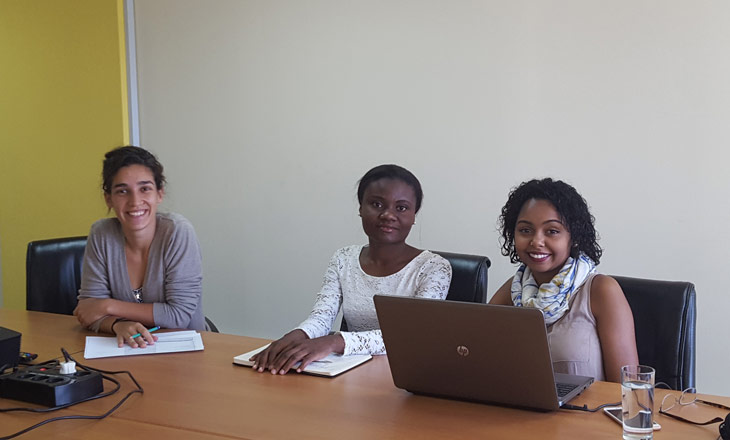
BIOFUND began in 2017 a programme of professional interns with students from Mozambican universities on internships lasting for 6 months. BIOFUND is welcoming Jéssica Julaia (degree in Marine, Aquatic and Coastal Biology) and Zaina Muita (degree in Ecology and Conservation of Terrestrial Biodiversity), both graduates from the Eduardo Mondlane University, who were the winners of the 1st competition for BIOFUND internships. This group also includes Eng. Susana Ferreira Silva (Science and Technology Faculty of the New University of Lisbon) under the INOV Contacto programme (cooperation programme between Mozambique and Portugal) in partnership with the BIOFUND Technical Assistance project.
Website renewed
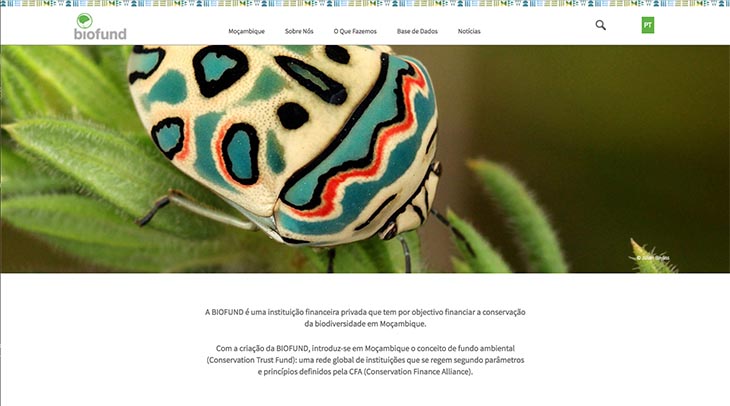
In 2017 BIOFUND renewed its website, introducing more information about its strategic objectives, its operational structure, partnerships and projects under way, among others. It also introduced complementary information about conservation projects under way in the country and links to documents of general interest about biodiversity, and the news page.

